Business
19 states lack laws preventing housing discrimination based on sexual orientation, gender identity
Published
10 months agoon

Housing discrimination is still a big issue in the U.S. According to the 2022 Fair Housing Trends Report, Americans filed 31,216 housing discrimination reports in 2021, an unprecedented number. One-third of those complaints were claims of discrimination based on sexual orientation or gender identity.
Nineteen states across the U.S. do not reinforce or enhance the federal law that prohibits people from being evicted, denied housing, or refused financing to rent or buy housing due to their sexual orientation or gender identity.
The Fair Housing Act, originally enacted in 1968, prevents housing discrimination based on race, color, national origin, religion, sex (added to the act in 1974), familial status, or disability (added in 1988). The federal government announced in 2021 that it would enforce the Fair Housing Act to prohibit housing discrimination based on sexual orientation and gender identity as part of its interpretation of sex-based discrimination.
Sexual orientation refers to sexual attraction and is separate from gender identity, which is someone’s personal understanding of themselves as a man, woman, neither, both, or another gender. Now that both sexual orientation and gender identity are protected under the federal Fair Housing Act as part of sex discrimination, states can pass laws to either reinforce or enhance nondiscrimination. Nineteen states have opted not to pass such laws.
Of those 19 states that do not have laws protecting LGBTQ+ residents against housing discrimination, many of them tend to vote conservatively or have Republican-controlled state governments.
Foothold Technology gathered data compiled by the nonprofit Movement Advancement Project to see which states protect LGBTQ+ residents from housing discrimination. States are displayed in alphabetical order.
![]()
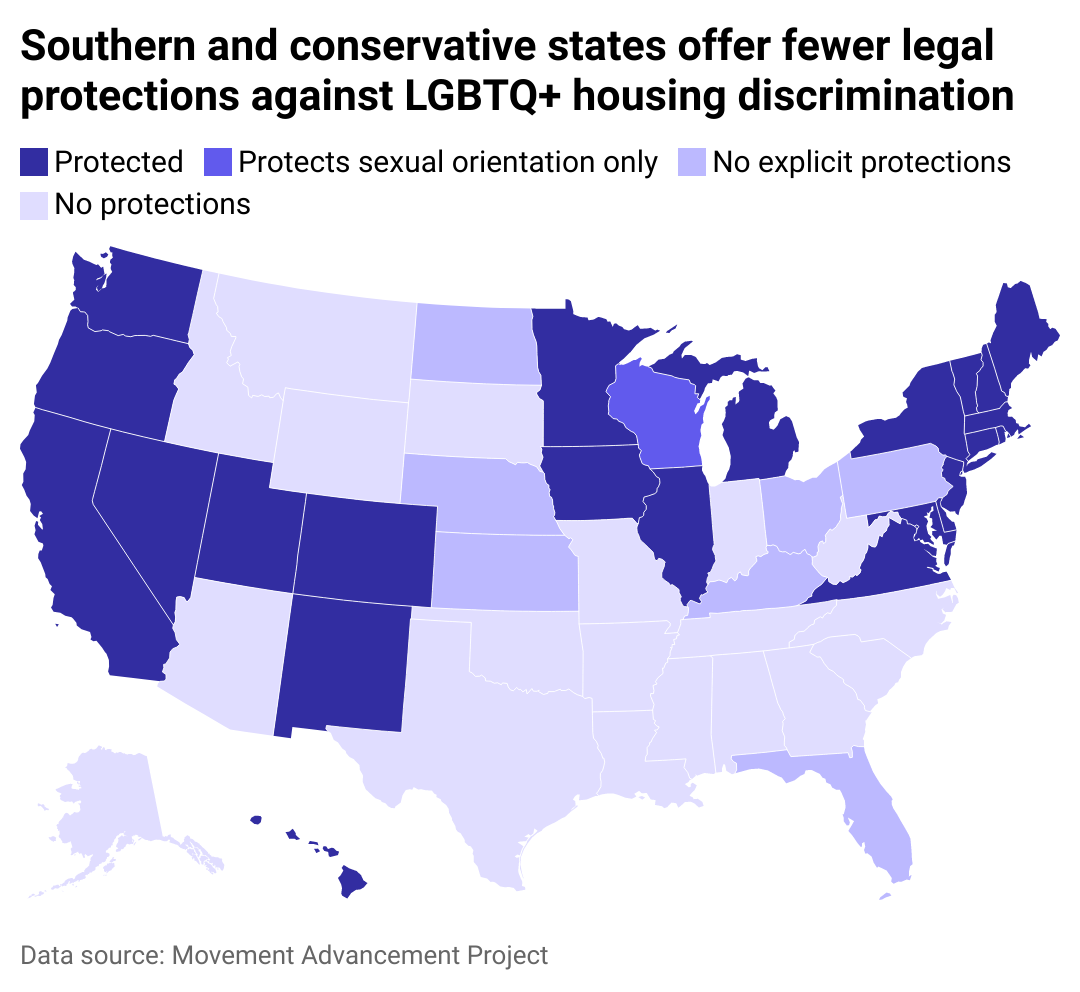
Foothold Technology
Nondiscrimination laws vary across the country
Nineteen states provide no state-level protections for LGBTQ+ people. Seven states do not provide explicit protections but interpret an existing prohibition on sex-based housing discrimination to include sexual orientation and gender identity. The exact language varies: Wisconsin, for example, explicitly forbids housing discrimination based on sexual orientation but does not mention gender identity.
Meanwhile, 23 states and Washington D.C. explicitly prohibit housing discrimination based on sexual orientation and gender identity, which aligns with federal law. State laws can extend nondiscrimination protection to another level of government and contribute to consistent enforcement of fair access to housing nationwide.
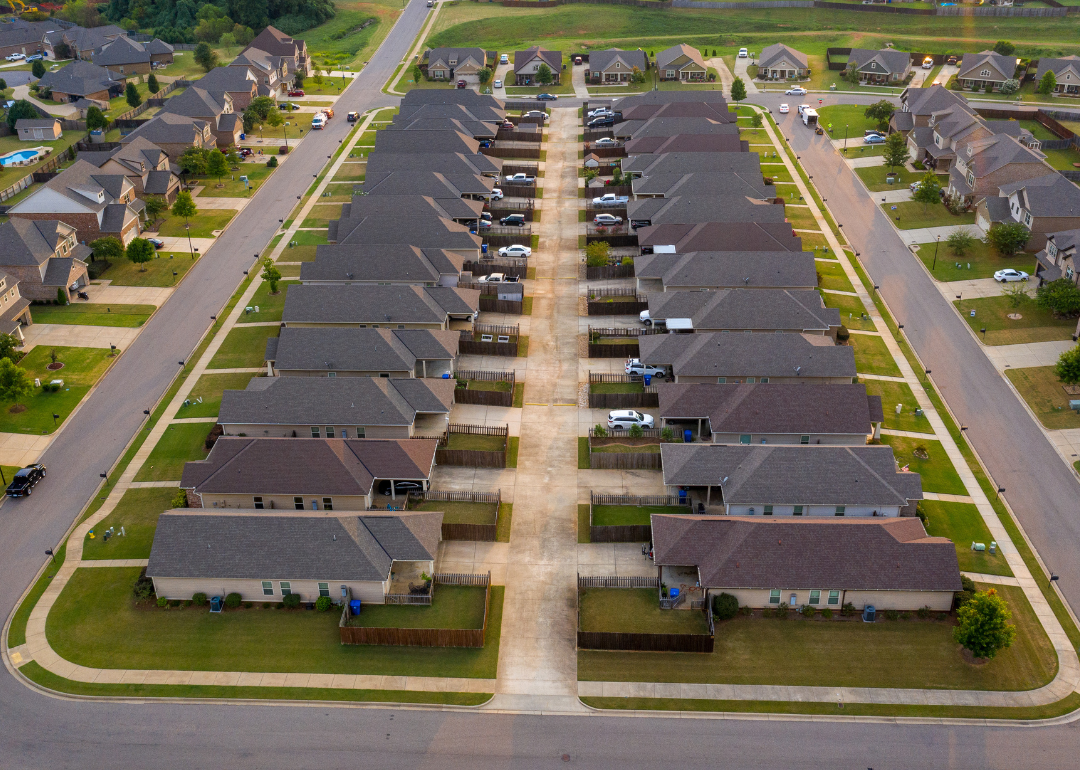
M.S. Maklidrone // Shutterstock
Alabama
– Protections against LGBTQ+ discrimination: No
Alabama does not provide state-level housing discrimination protection based on sexual orientation and gender identity. LGBTQ+ residents of Alabama are still covered by the federal Fair Housing Act. Republicans control both chambers of the state legislature and the governorship in Alabama.
Birmingham, the state’s largest city, enacted a local law in 2017 prohibiting employment and housing discrimination on the basis of sexual orientation and gender identity. The rest of the state remains unprotected from such housing discrimination.

CREATISTA // Shutterstock
Alaska
– Protections against LGBTQ+ discrimination: No
Alaska reversed its previous nondiscrimination protections for LGBTQ+ people and now provides no protections from housing discrimination based on sexual orientation and gender identity. In 2021, the Alaska State Commission for Human Rights issued guidance that interpreted the state’s nondiscrimination law to prevent discrimination based on sexual orientation and gender identity in the workplace, housing, finance decisions, and public accommodations.
However, in August 2022, during the primary election season, the commission deleted language from its website that stated it’s illegal to discriminate against LGBTQ+ people. The Anchorage Daily News and ProPublica reported that the commission also began refusing to investigate housing discrimination complaints that were based on sexual orientation and gender identity. Republicans hold majorities in both chambers of the state legislature and the governorship in Alaska.

Canva
Arizona
– Protections against LGBTQ+ discrimination: No
Arizona does not provide state-level housing discrimination protection based on sexual orientation and gender identity. The federal Fair Housing Act still covers LGBTQ+ residents of Arizona. Republicans control both chambers of the state legislature in Arizona, though the governor is a Democrat.
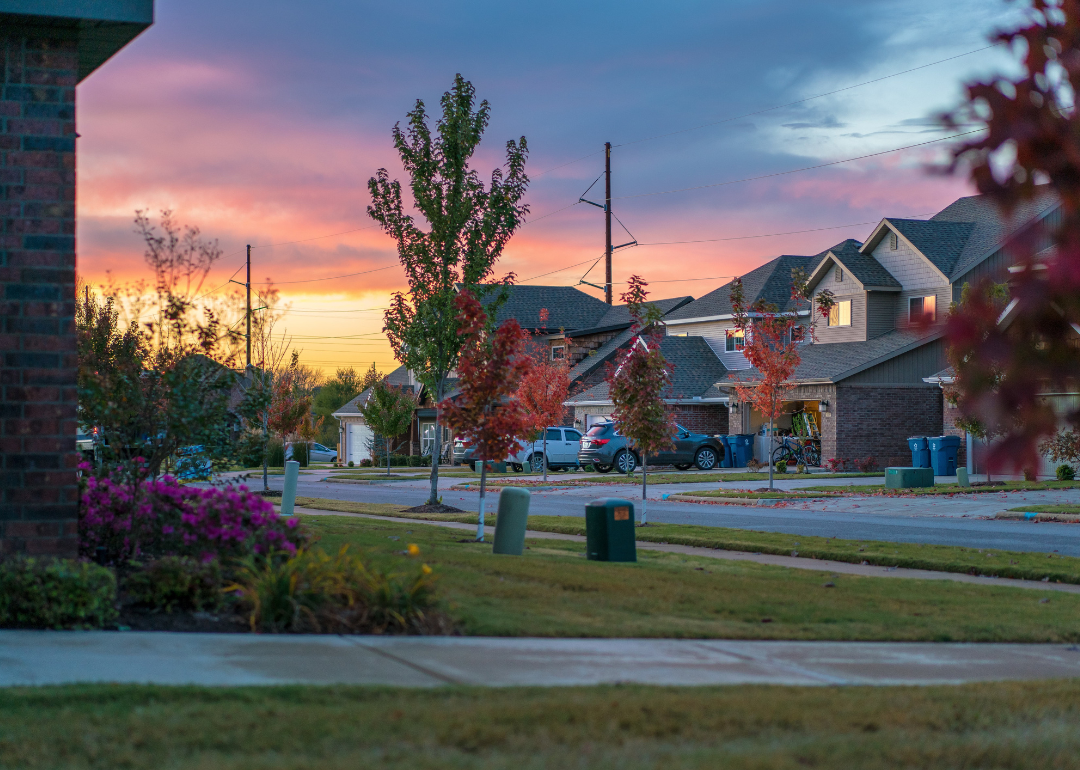
shuttersv // Shutterstock
Arkansas
– Protections against LGBTQ+ discrimination: No
Arkansas does not provide state-level housing discrimination protection based on sexual orientation and gender identity. State law prevents counties and local municipalities from passing ordinances that prohibit discrimination on a basis not included in state law. The federal Fair Housing Act still covers LGBTQ+ residents. Republicans control both chambers of the state legislature and the governorship in Arkansas.

Canva
California
– Protections against LGBTQ+ discrimination: Yes
California’s housing discrimination law includes sexual orientation and gender identity as protected classes. The law was amended in 1999 to include sexual orientation and in 2004 to include gender identity. Democrats control both chambers of the state legislature and the governorship in California.

Canva
Colorado
– Protections against LGBTQ+ discrimination: Yes
Colorado prohibits housing discrimination based on sexual orientation, sex, and transgender status, but its law does not specifically mention gender identity. A 2008 amendment to the law added sexual orientation as a protected class and included “transgender status” in the definition of sexual orientation. Democrats control both chambers of the state legislature and the governorship in Colorado.
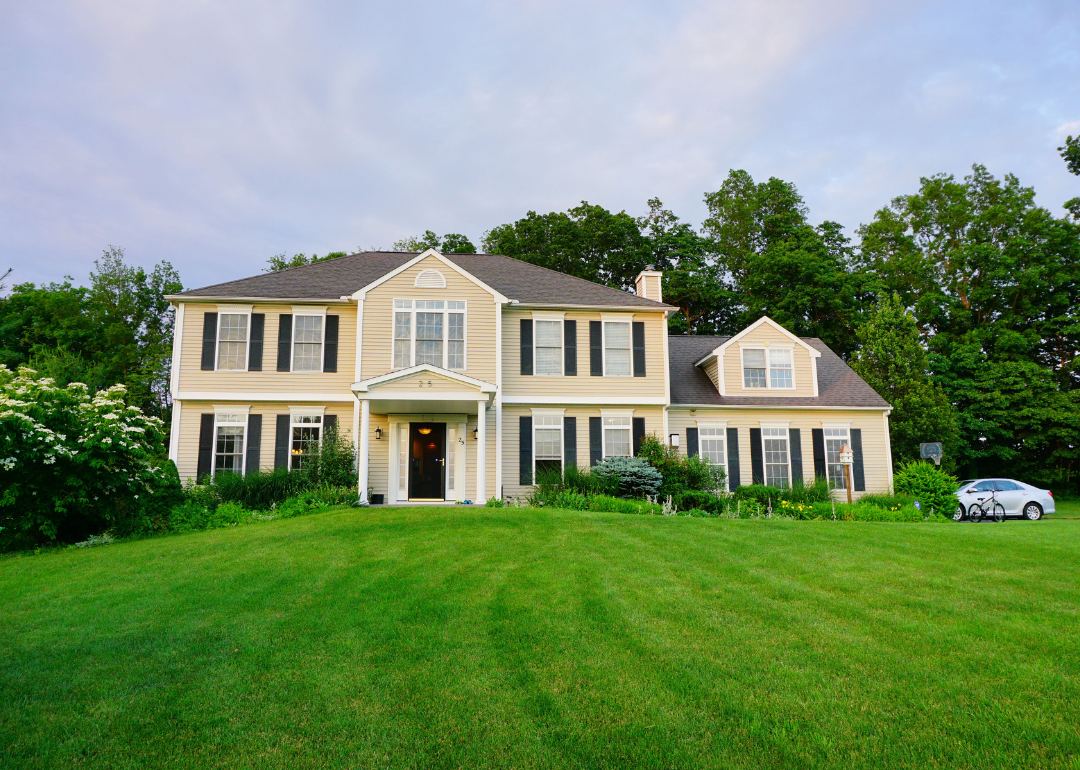
Feng Cheng // Shutterstock
Connecticut
– Protections against LGBTQ+ discrimination: Yes
Connecticut law protects from housing discrimination against LGBTQ+ people. The nondiscrimination law was amended in 1991 to include sexual orientation and in 2011 to include gender identity. Democrats control both chambers of the state legislature and the governorship in Connecticut.
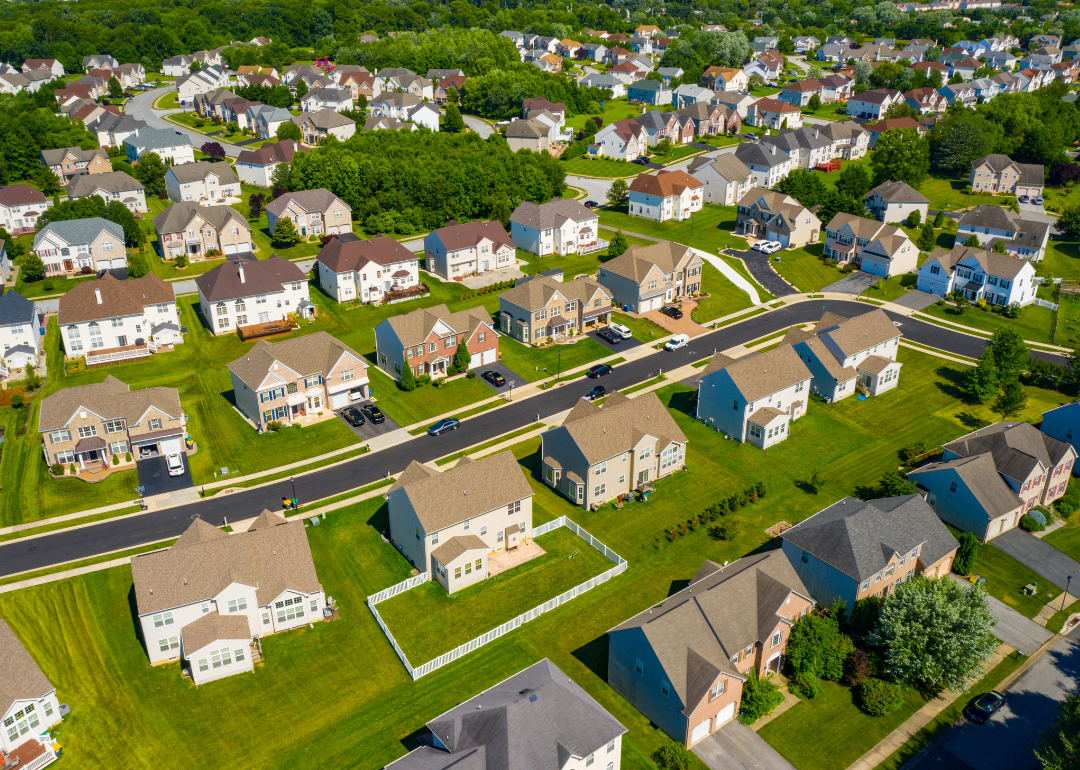
Felix Mizioznikov // Shutterstock
Delaware
– Protections against LGBTQ+ discrimination: Yes
Delaware prohibits housing discrimination based on sexual orientation and gender identity. The state added sexual orientation to its nondiscrimination law in 2009 and added gender identity in 2013. Democrats control both chambers of the state legislature and the governorship in Delaware.

Canva
Florida
– Protections against LGBTQ+ discrimination: Interprets existing protections to include sexual orientation and gender identity
The Florida Commission on Human Relations interprets the state’s housing nondiscrimination law to protect LGBTQ+ people. The commission’s questionnaire for filing a claim of housing discrimination includes options to note sexual orientation or gender identity as the basis of the alleged discrimination. Republicans control both chambers of the state legislature and the governorship in Florida.
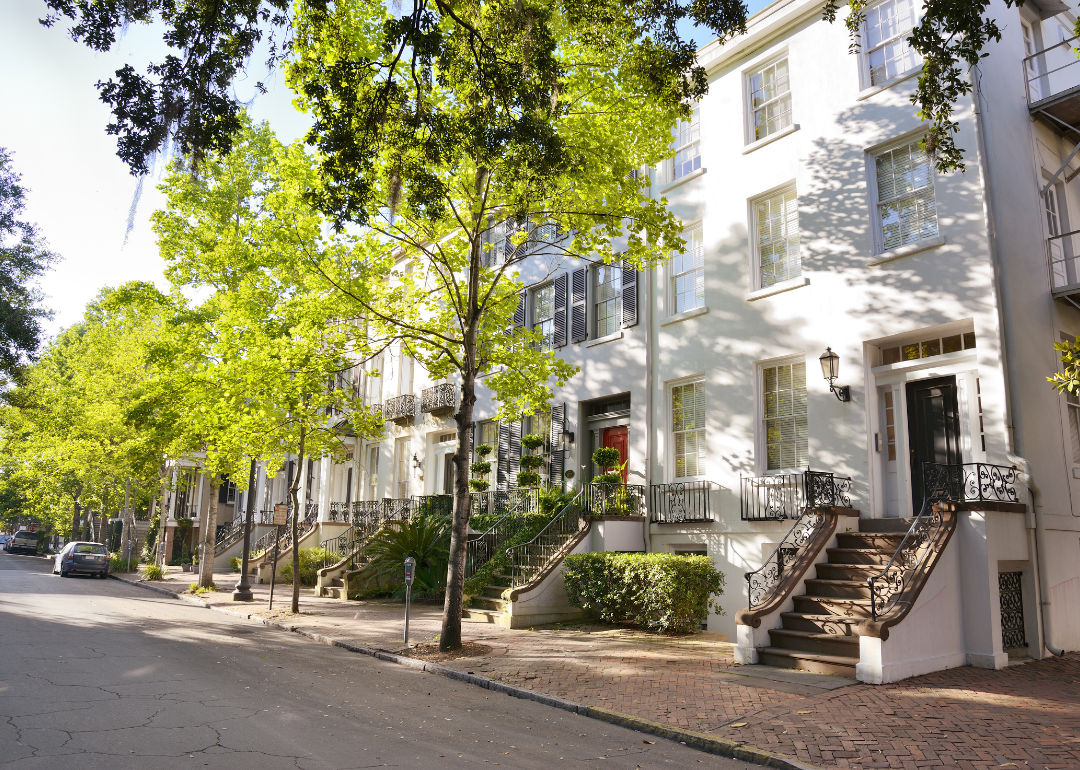
Canva
Georgia
– Protections against LGBTQ+ discrimination: No
Georgia does not provide state-level housing discrimination protection based on sexual orientation and gender identity. Clayton County, Georgia, was the defendant in the Bostock vs. Clayton County civil rights case that led to a landmark U.S. Supreme Court ruling in 2020. The court determined Title VII’s “sex” discrimination prohibition also barred discrimination based on sexual orientation and gender identity. Georgia was not among the many states that amended their nondiscrimination laws in response to that ruling. LGBTQ+ residents are still covered by the federal Fair Housing Act. Republicans control both chambers of the state legislature and the governorship in Georgia.

Canva
Hawaii
– Protections against LGBTQ+ discrimination: Yes
Hawaii law protects from housing discrimination for LGBTQ+ people. The nondiscrimination law was amended in 2005 to include sexual orientation and gender identity as protected classes. Democrats control both chambers of the state legislature and the governorship in Hawaii.

Charles Knowles // Shutterstock
Idaho
– Protections against LGBTQ+ discrimination: No
Idaho does not provide state-level housing discrimination protection on the basis of sexual orientation and gender identity. The federal Fair Housing Act still covers LGBTQ+ residents. Republicans control both chambers of the state legislature and the governorship in Idaho.
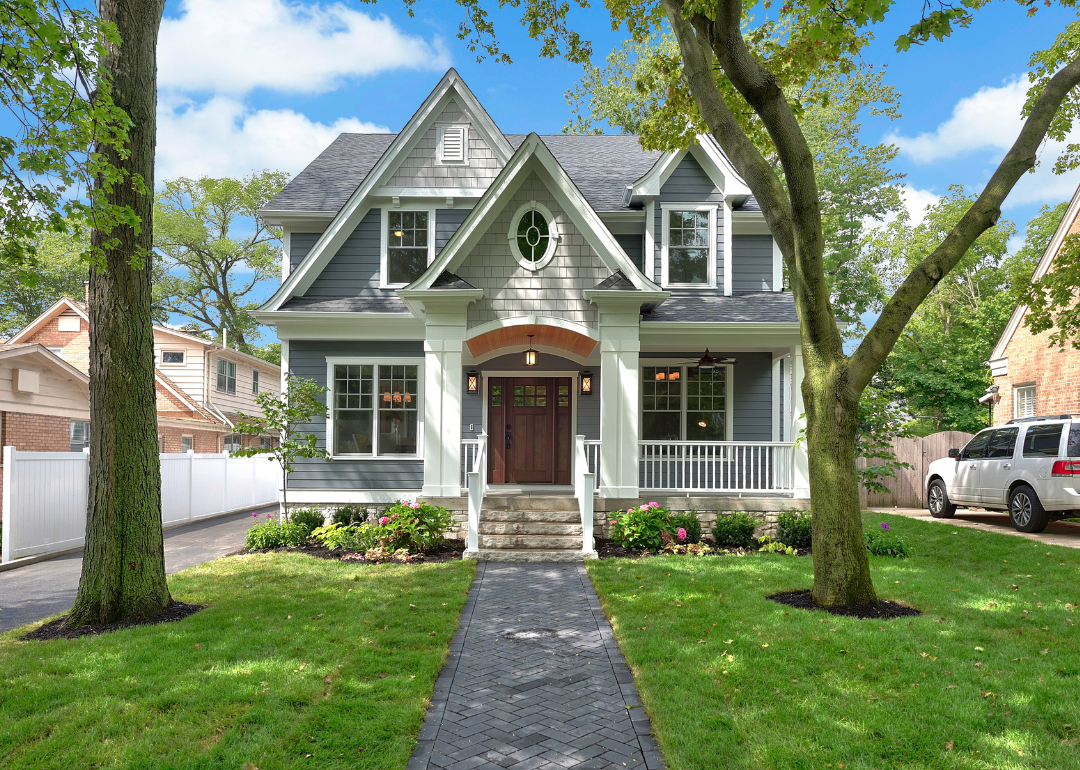
Canva
Illinois
– Protections against LGBTQ+ discrimination: Yes
Illinois prohibits housing discrimination on the basis of sexual orientation and gender identity. The law, which does not specifically mention gender identity, took effect in 2006. Democrats control both chambers of the state legislature and the governorship in Illinois.
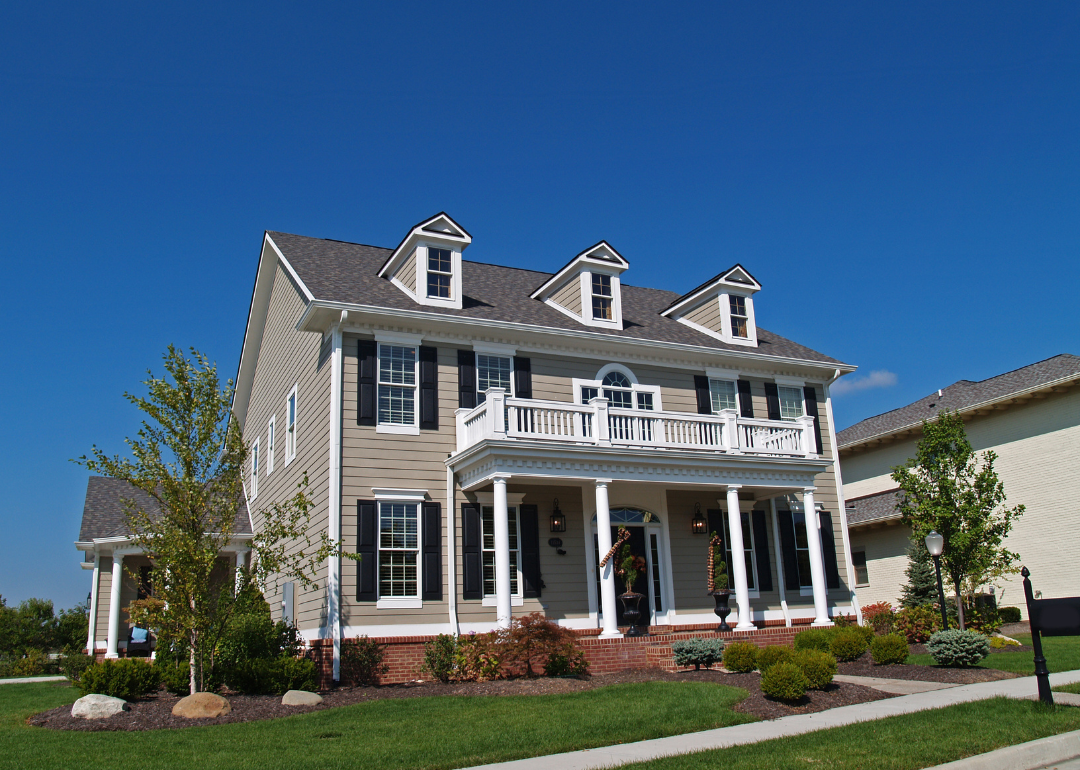
Lindasj22 // Shutterstock
Indiana
– Protections against LGBTQ+ discrimination: No
Indiana does not provide state-level housing discrimination protection on the basis of sexual orientation and gender identity. In 2015, when Mike Pence was governor of Indiana, state lawmakers passed the Religious Freedom Restoration Act, which affirmed business owners’ right to refuse service to someone based on the owners’ religious beliefs.
This law was perceived as targeting LGBTQ+ people. Due to public backlash and pressure from the business community, Indiana legislators passed another law one week later that specified RFRA did not authorize discrimination. However, the state still does not explicitly prohibit discrimination against LGBTQ+ people, though the federal Fair Housing Act still applies. Republicans control both chambers of the state legislature and the governorship in Indiana.
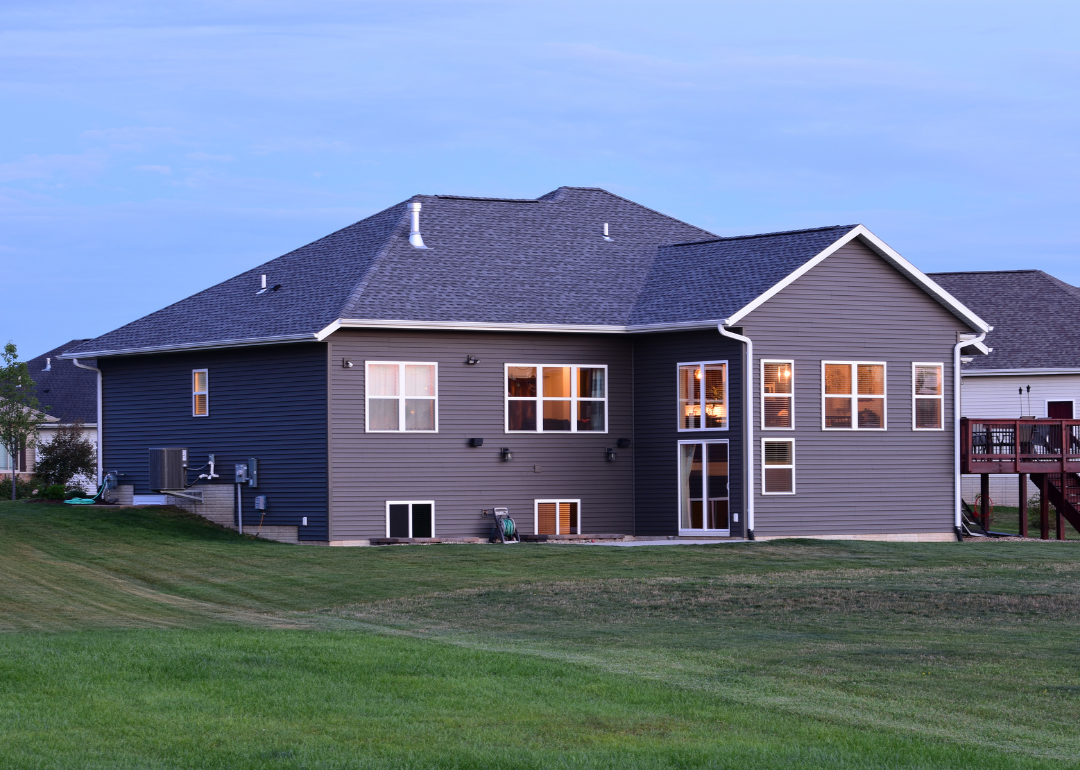
Mohamed R. Gohar // Shutterstock
Iowa
– Protections against LGBTQ+ discrimination: Yes
Iowa prohibits housing discrimination based on sexual orientation and gender identity. The amendment was made in 2007. Republicans control both chambers of the state legislature and the governorship in Iowa.

Lisa Eastman // Shutterstock
Kansas
– Protections against LGBTQ+ discrimination: Interprets existing protections to include sexual orientation and gender identity
The Kansas Human Rights Commission interprets the state’s housing nondiscrimination law to protect LGBTQ+ people. The commission issued guidance to that effect in 2020 in response to the Bostock v. Clayton County decision. The commission decided to extend that interpretation beyond employment to prohibit discrimination in housing and public accommodations as well. Republicans control both chambers of the state legislature; the governor, however, is a Democrat.

Anne Kitzman // Shutterstock
Kentucky
– Protections against LGBTQ+ discrimination: Interprets existing protections to include sexual orientation and gender identity
The Kentucky Commission on Human Rights includes sexual orientation and gender identity in its interpretation of state law prohibiting housing discrimination based on sex. That guidance was made in response to the 2020 Bostock v. Clayton County decision. Republicans control both chambers of the state legislature; the governor is a Democrat.

Allison J. Hahn // Shutterstock
Louisiana
– Protections against LGBTQ+ discrimination: No
Louisiana does not provide state-level housing discrimination protection on the basis of sexual orientation and gender identity. LGBTQ+ residents are still covered by the federal Fair Housing Act. Republicans control both chambers of the state legislature in Louisiana; the governor is a Democrat.
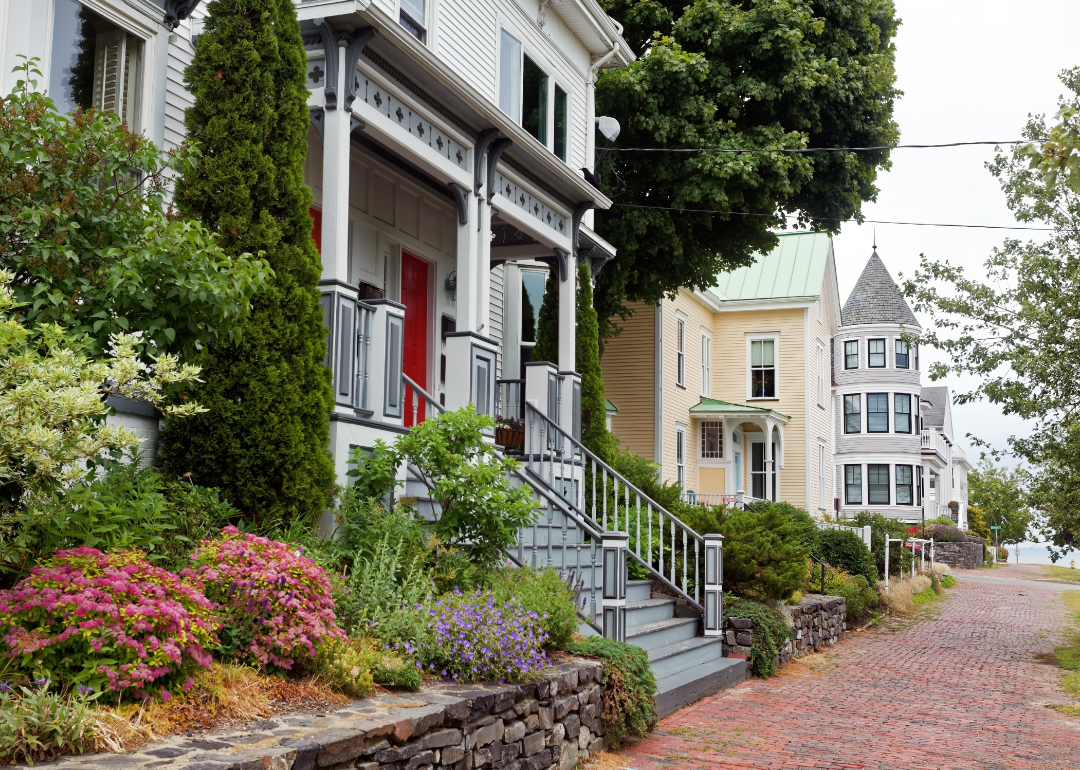
Noel V. Baebler // Shutterstock
Maine
– Protections against LGBTQ+ discrimination: Yes
Maine law bars housing discrimination against LGBTQ+ people. The state’s housing discrimination law was amended in 2005 to include sexual orientation and gender identity. Democrats control both chambers of the state legislature and the governorship in Maine.
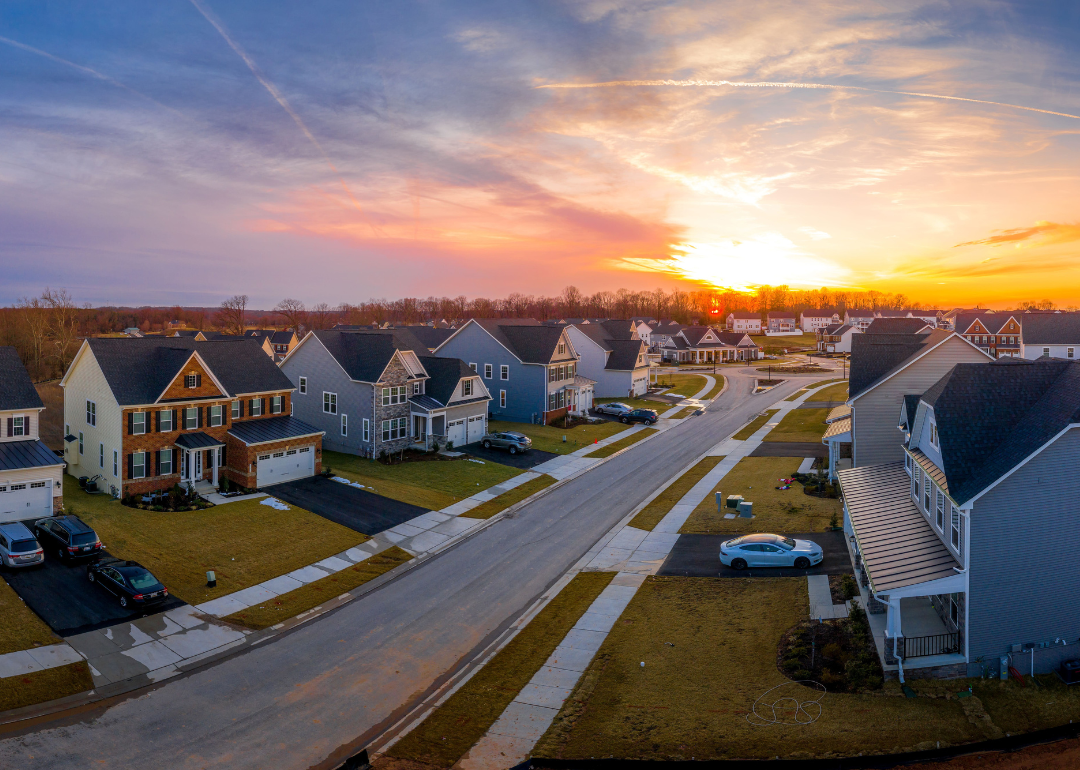
tokar // Shutterstock
Maryland
– Protections against LGBTQ+ discrimination: Yes
Maryland prohibits housing discrimination on the basis of sexual orientation and gender identity. The state’s law was amended in 2001 to include sexual orientation and in 2014 to include gender identity. Democrats control both chambers of the state legislature and the governorship in Maryland.
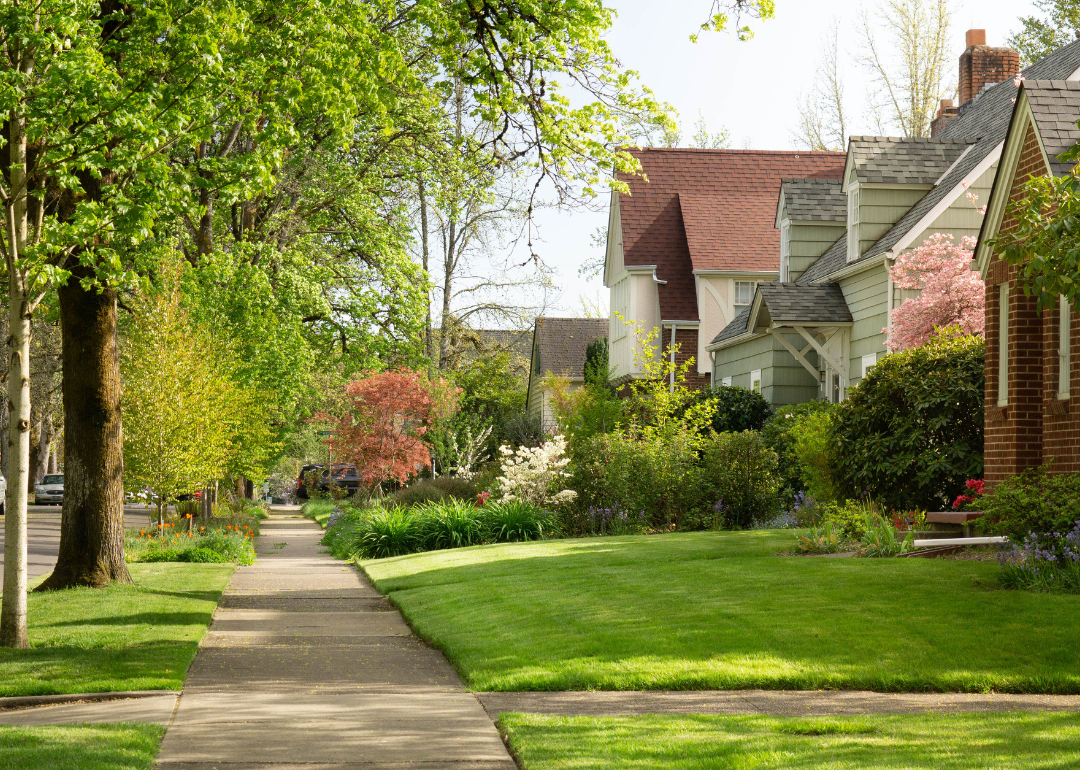
d murk photographs // Shutterstock
Massachusetts
– Protections against LGBTQ+ discrimination: Yes
Massachusetts law bans housing discrimination against LGBTQ+ people. Protections for sexual orientation and gender identity were added to the law in 2011. Democrats control both chambers of the state legislature and the governorship in Massachusetts.
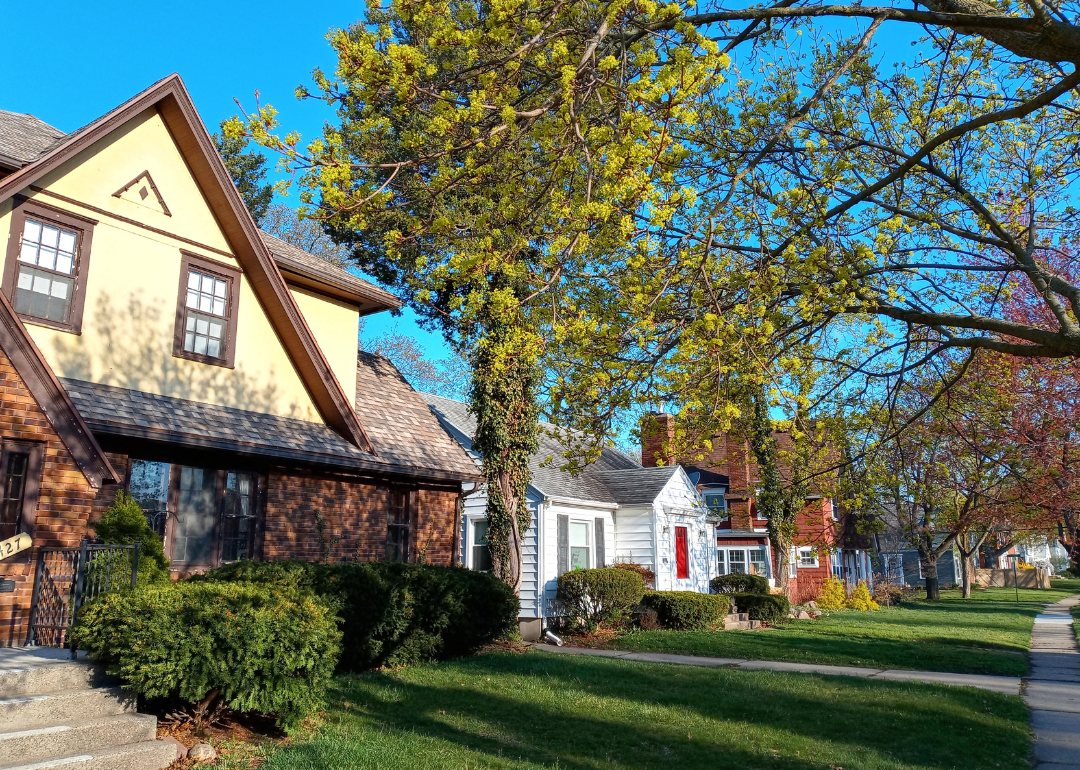
T-I // Shutterstock
Michigan
– Protections against LGBTQ+ discrimination: Yes
Michigan prohibits housing discrimination based on sexual orientation and gender identity. A July 2022 state Supreme Court decision in Rouch World LLC v. Department of Civil Rights determined that the state’s civil rights law prohibiting sex-based discrimination also covers discrimination based on sexual orientation and gender identity. The Michigan Civil Rights Commission issued guidance to that effect in 2018, and the state Supreme Court decision affirmed that interpretation. Democrats control both chambers of the state legislature and the governorship in Michigan.
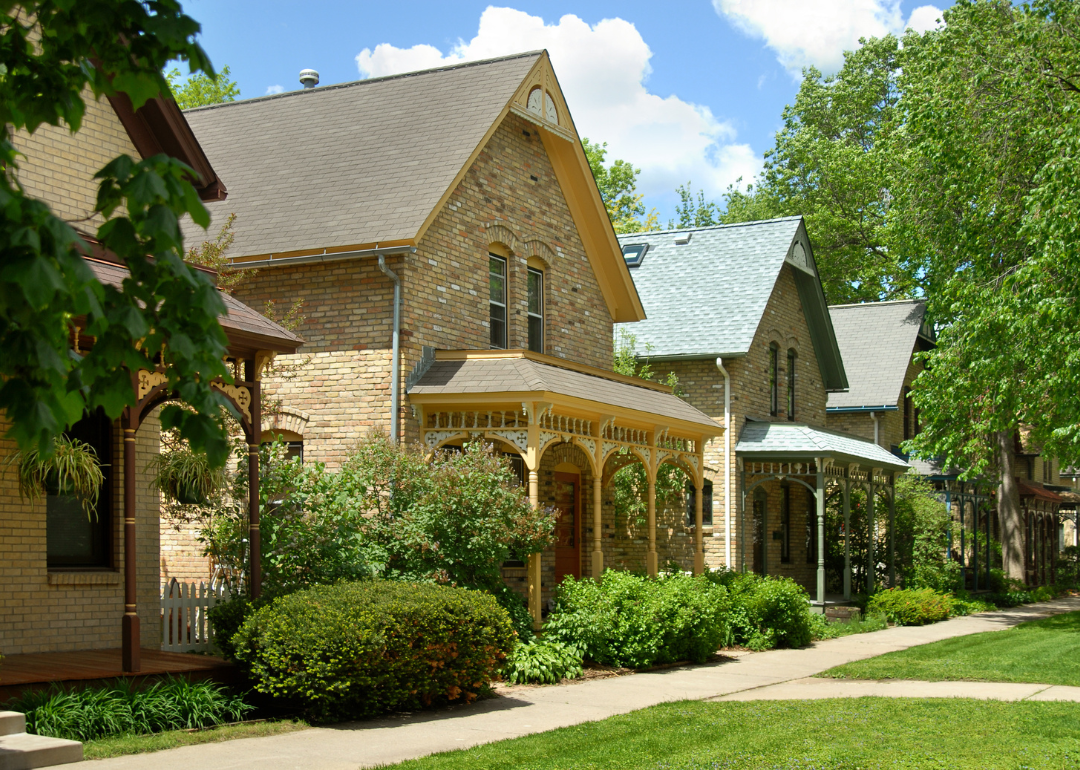
719production // Shutterstock
Minnesota
– Protections against LGBTQ+ discrimination: Yes
Minnesota law provides protection from housing discrimination for LGBTQ+ people. Since 1993, state law has included sexual orientation and sex as protected classes. Democrats control both chambers of the state legislature and the governorship in Minnesota.
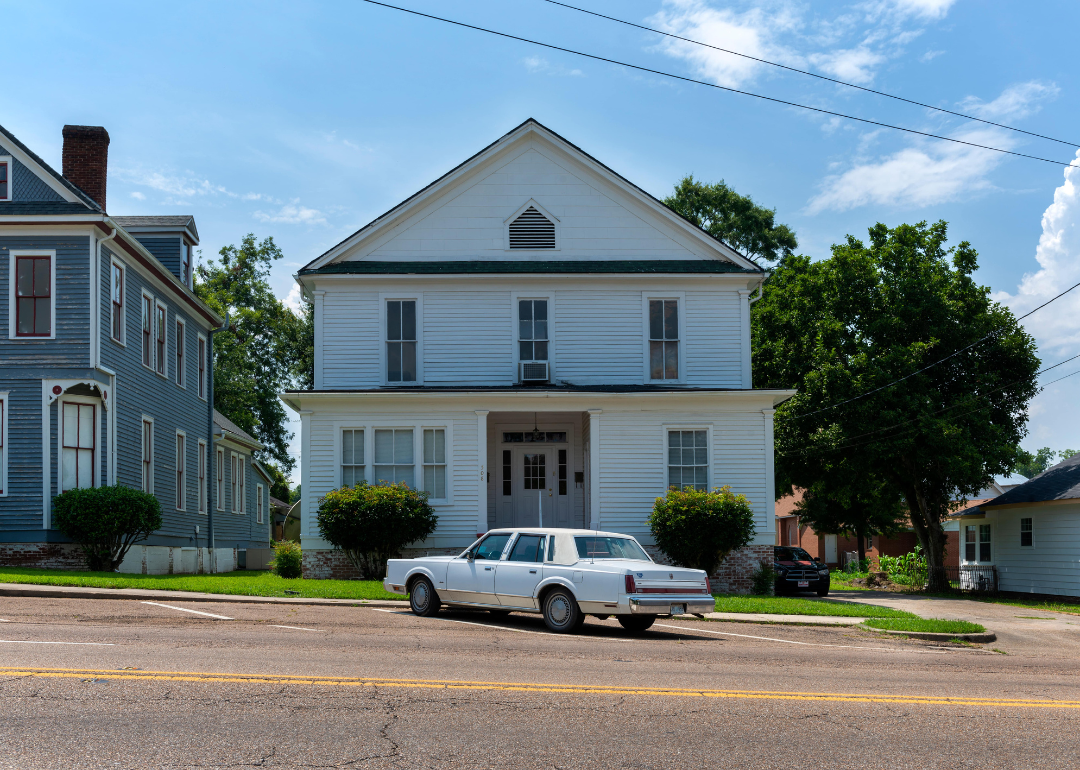
TLF Images // Shutterstock
Mississippi
– Protections against LGBTQ+ discrimination: No
Mississippi does not provide state-level housing discrimination protection on the basis of sexual orientation and gender identity. LGBTQ+ residents are still covered by the federal Fair Housing Act. Republicans control both chambers of the state legislature and the governorship in Mississippi.
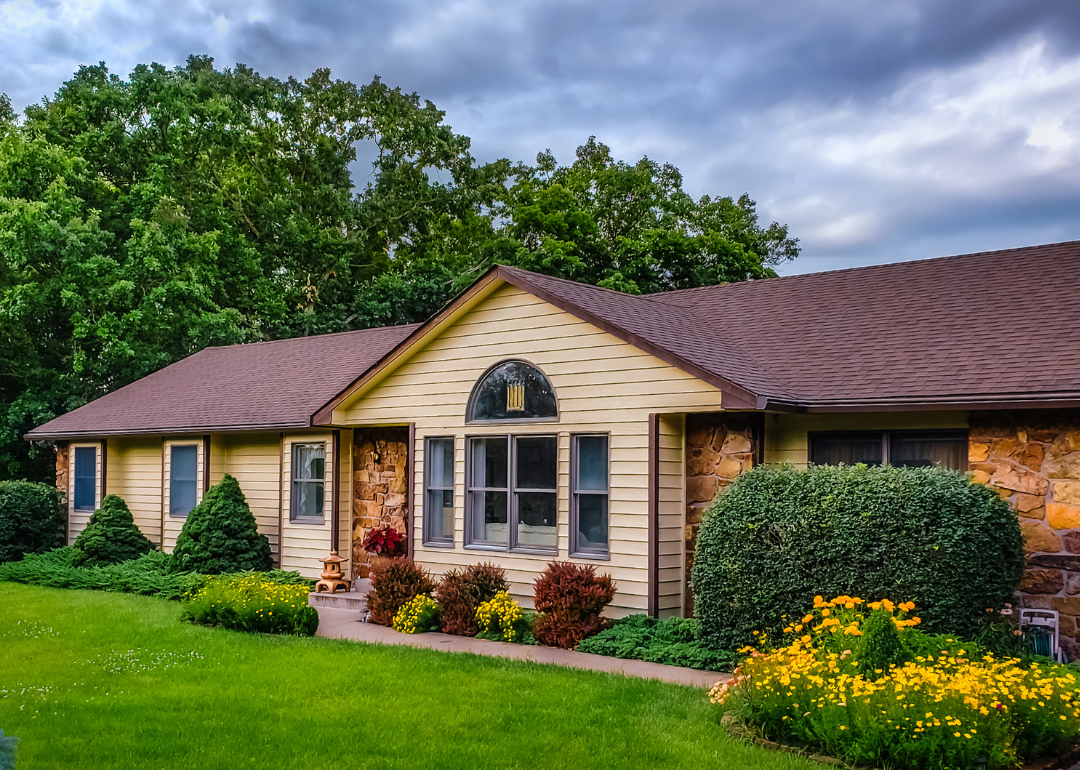
LanaG // Shutterstock
Missouri
– Protections against LGBTQ+ discrimination: No
Missouri does not provide state-level housing discrimination protection on the basis of sexual orientation and gender identity. LGBTQ+ residents are still covered by the federal Fair Housing Act. Republicans control both chambers of the state legislature and the governorship in Missouri.

Jim Cumming // Shutterstock
Montana
– Protections against LGBTQ+ discrimination: No
Montana does not provide state-level housing discrimination protection on the basis of sexual orientation and gender identity. LGBTQ+ residents are still covered by the federal Fair Housing Act. Republicans control both chambers of the state legislature and the governorship in Montana.

Aspects and Angles // Shutterstock
Nebraska
– Protections against LGBTQ+ discrimination: Interprets existing protections to include sexual orientation and gender identity
The Nebraska Equal Opportunity Commission includes sexual orientation and gender identity in its interpretation of state law prohibiting housing discrimination based on sex. The commission adopted that interpretation in 2020 after the Bostock v. Clayton County decision. Nebraska’s governor is a Republican, and Republicans dominate the state’s legislature.

Canva
Nevada
– Protections against LGBTQ+ discrimination: Yes
Nevada prohibits housing discrimination based on sexual orientation and gender identity. Those protected classes were added to the nondiscrimination law in 2011. Democrats control both chambers of the state legislature in Nevada; the governor is a Republican.

Canva
New Hampshire
– Protections against LGBTQ+ discrimination: Yes
New Hampshire law bans housing discrimination against LGBTQ+ people. The law was amended in 1997 to include protections for sexual orientation and in 2018 to include gender identity. Republicans control both chambers of the state legislature and the governorship in New Hampshire.

Canva
New Jersey
– Protections against LGBTQ+ discrimination: Yes
New Jersey prohibits housing discrimination on the basis of sexual orientation and gender identity. Protections were added for sexual orientation in 1992 and gender identity in 2007. Democrats control both chambers of the state legislature and the governorship in New Jersey.
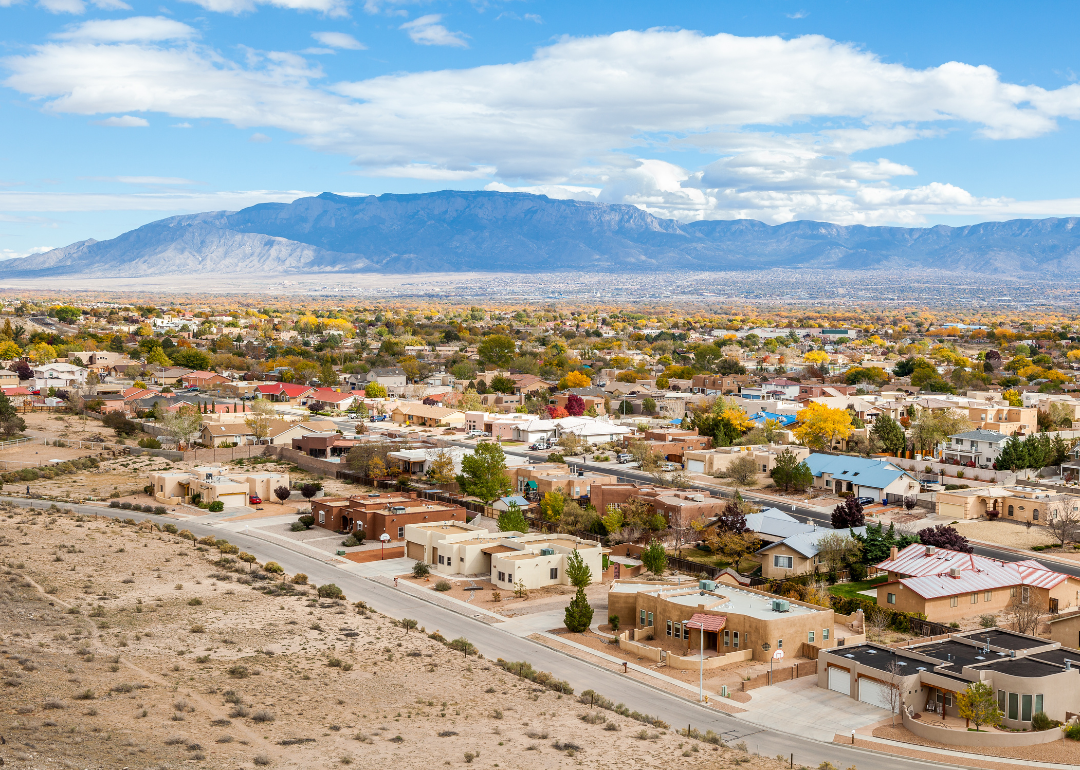
turtix // Shutterstock
New Mexico
– Protections against LGBTQ+ discrimination: Yes
New Mexico law protects from housing discrimination for LGBTQ+ people. The measure was adopted in 2003. Democrats control both state legislature chambers and New Mexico’s governorship.
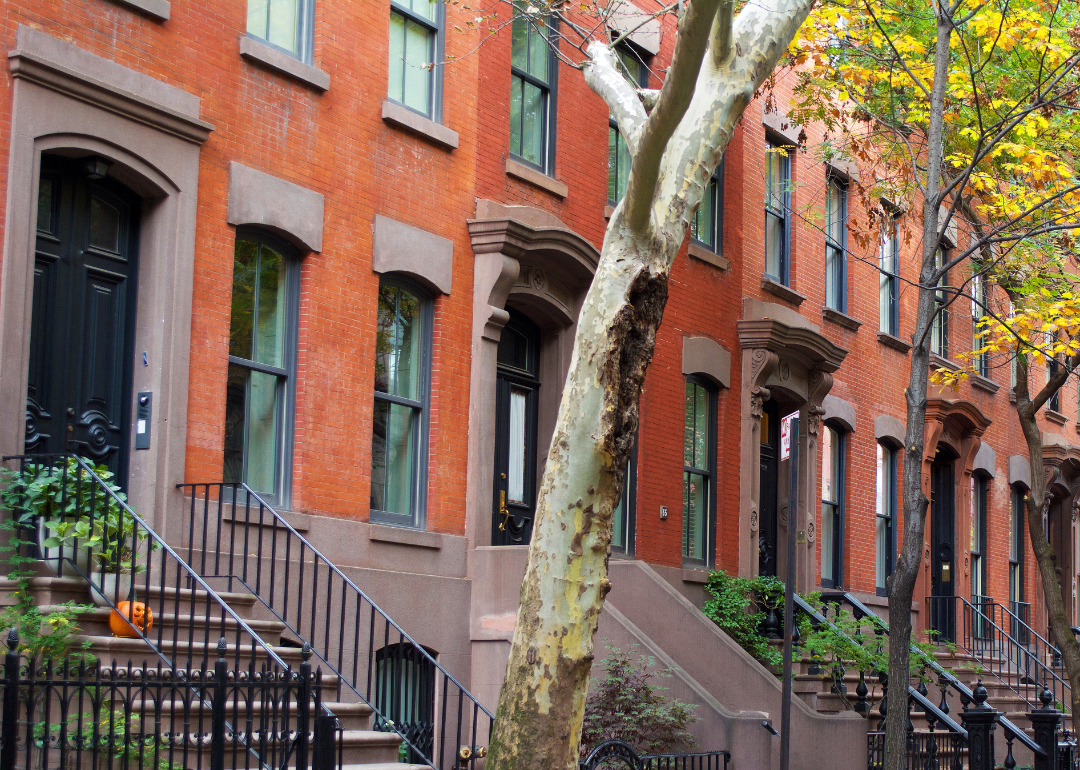
Canva
New York
– Protections against LGBTQ+ discrimination: Yes
New York prohibits housing discrimination against LGBTQ+ people. State law was amended in 2002 to prohibit discrimination on the basis of sexual orientation and in 2019 to prohibit discrimination based on gender identity. Even before the latest amendment, a 2015 executive order barred gender identity-based discrimination. Democrats control both chambers of the state legislature and the governorship in New York.
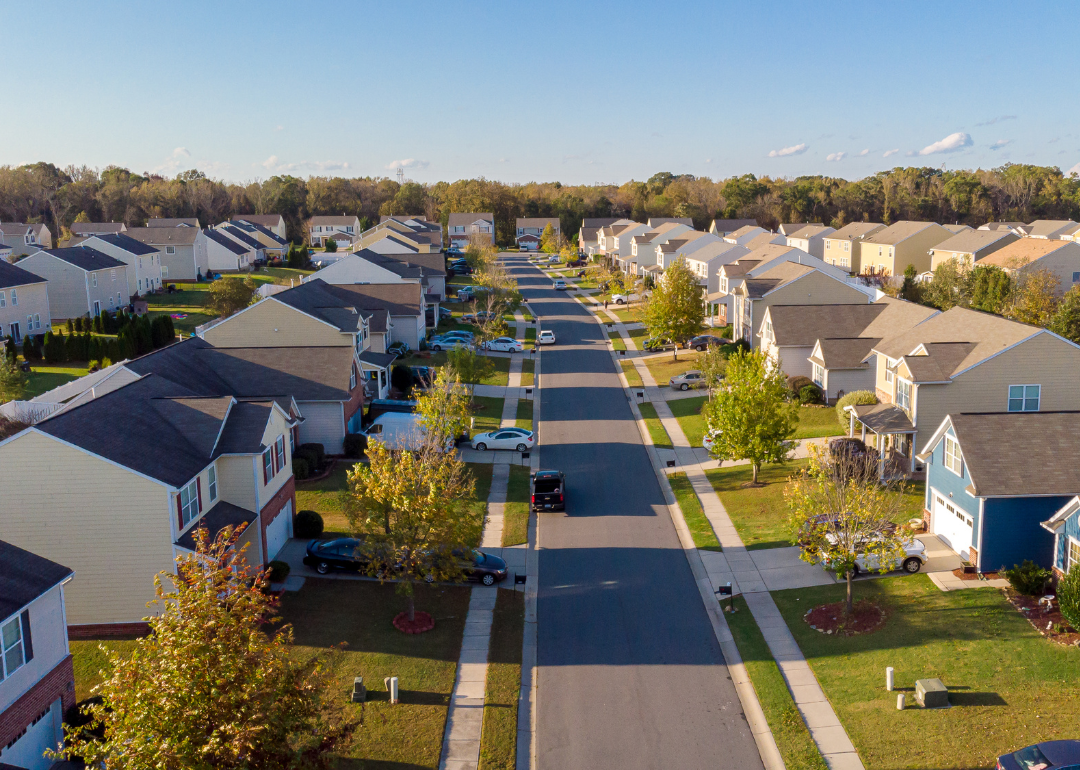
Gus Valente // Shutterstock
North Carolina
– Protections against LGBTQ+ discrimination: No
North Carolina does not provide state-level housing discrimination protection on the basis of sexual orientation and gender identity. From 2016 through 2020, state law prevented local municipalities from passing or enforcing their own nondiscrimination laws, but that provision has expired. Even without state protections, LGBTQ+ residents are still covered by the federal Fair Housing Act. Republicans control both chambers of the state legislature in North Carolina, and the governor is a Democrat.
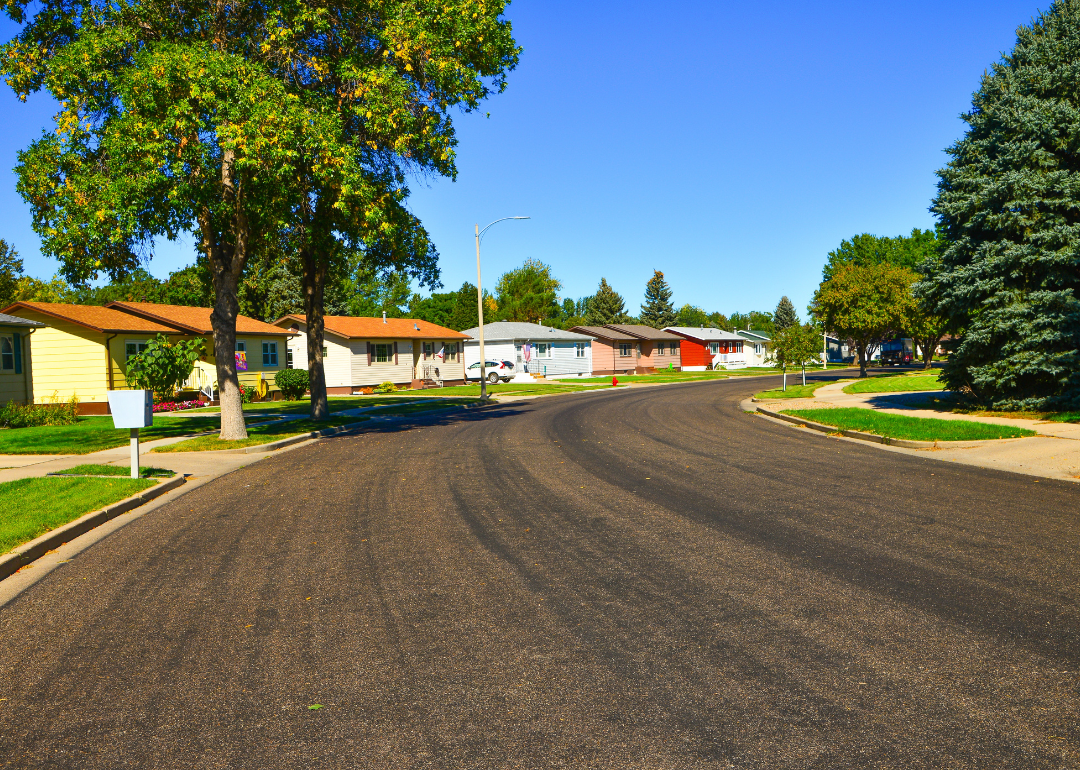
northlight // Shutterstock
North Dakota
– Protections against LGBTQ+ discrimination: Interprets existing protections to include sexual orientation and gender identity
The North Dakota Department of Labor and Human Rights includes sexual orientation and gender identity in its interpretation of state law prohibiting housing discrimination based on sex. The department adopted that interpretation in 2020 as a result of the Bostock v. Clayton County decision. Republicans control both chambers of the state legislature and the governorship in North Dakota.
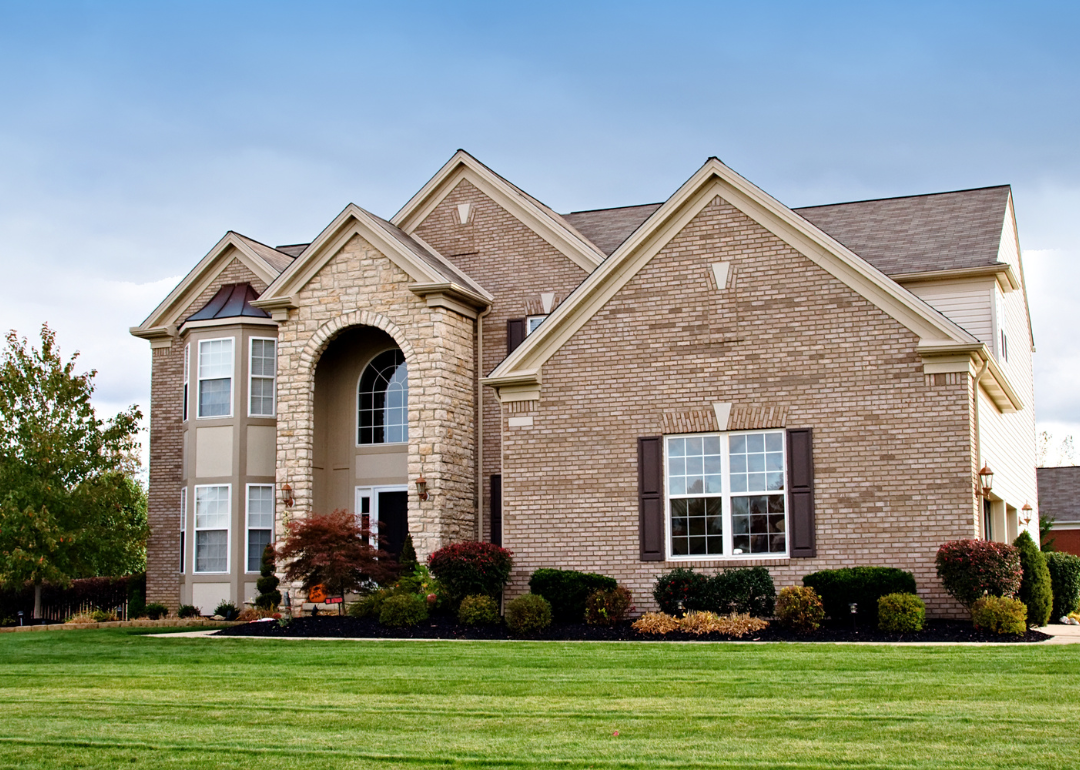
Denise Kappa // Shutterstock
Ohio
– Protections against LGBTQ+ discrimination: Interprets existing protections to include sexual orientation and gender identity
The Ohio Civil Rights Commission interprets the state’s nondiscrimination law to prohibit housing discrimination on the basis of sexual orientation and gender identity. It adopted that interpretation in 2021. Republicans control both chambers of the state legislature and the governorship in Ohio.
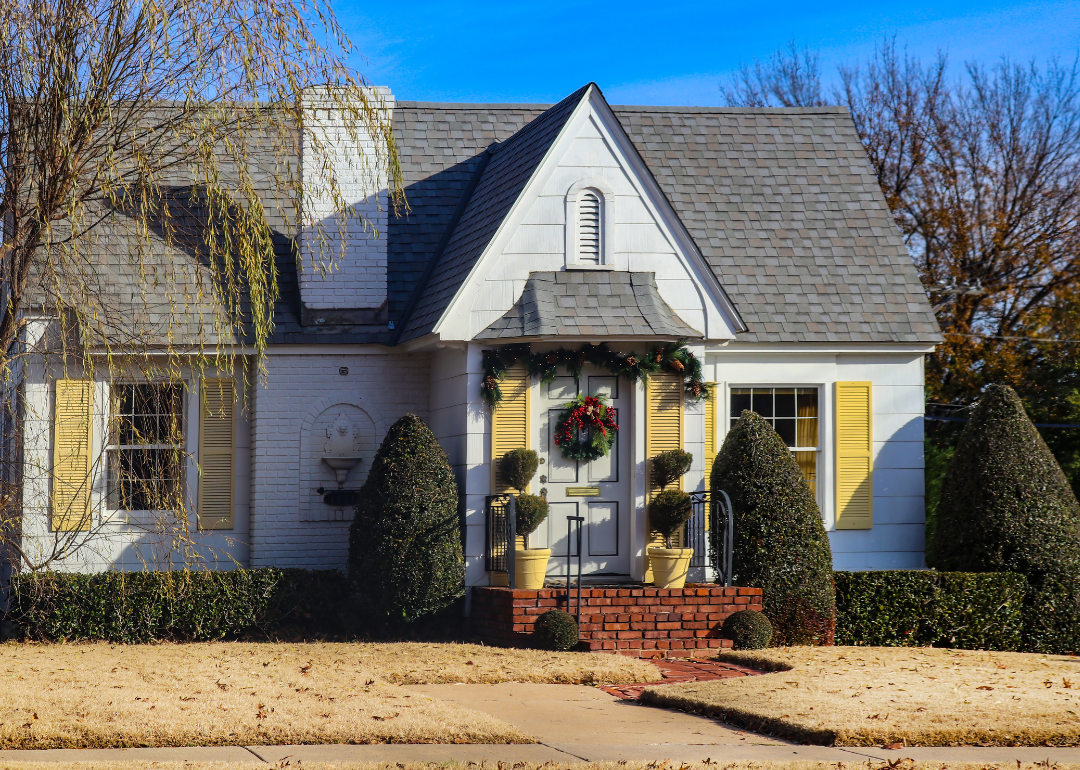
Vineyard Perspective // Shutterstock
Oklahoma
– Protections against LGBTQ+ discrimination: No
Oklahoma does not provide state-level housing discrimination protection on the basis of sexual orientation and gender identity. The federal Fair Housing Act still covers LGBTQ+ residents. Republicans control both chambers of the state legislature and the governorship in Oklahoma.

Canva
Oregon
– Protections against LGBTQ+ discrimination: Yes
Oregon law protects LGBTQ+ people from housing discrimination. The law was amended in 2007 to prohibit discrimination based on sexual orientation and gender identity. Democrats control both chambers of the state legislature and the governorship in Oregon.
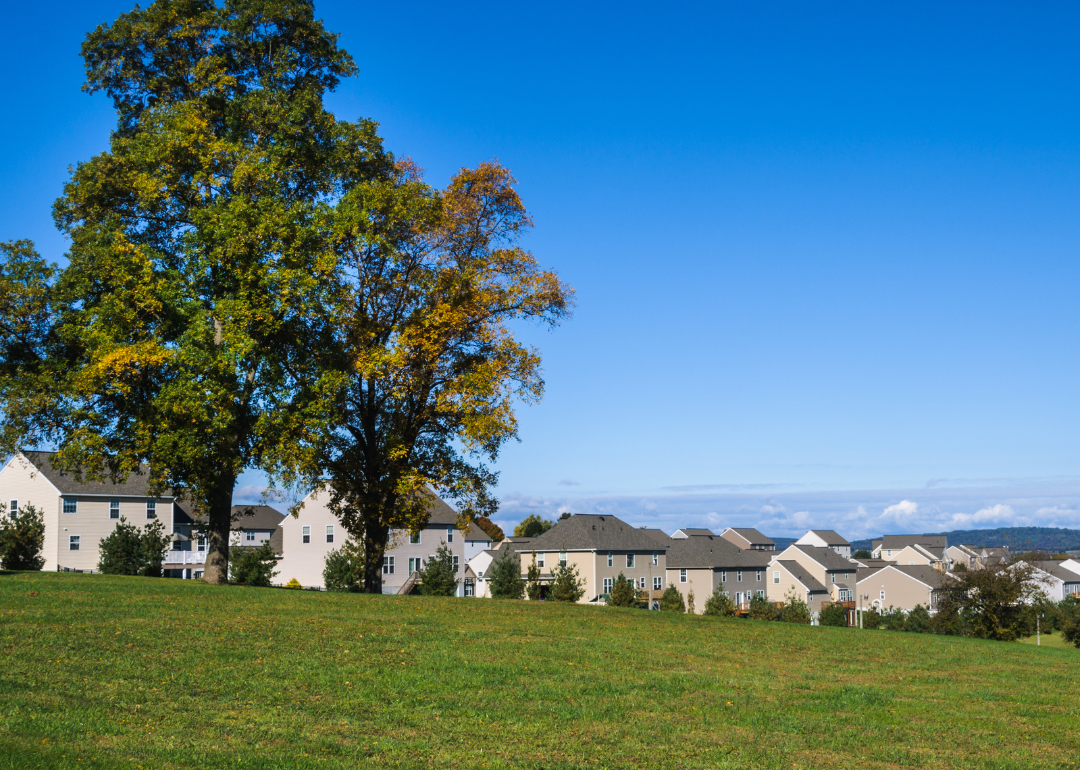
Canva
Pennsylvania
– Protections against LGBTQ+ discrimination: Interprets existing protections to include sexual orientation and gender identity
Pennsylvania’s Human Relations Commission interprets the state’s nondiscrimination law to prohibit housing discrimination on the basis of sexual orientation and gender identity. The commission added the guidance to the Pennsylvania Human Relations Act in 2018. The state legislature is divided between Democrats and Republicans; the governor is a Democrat.
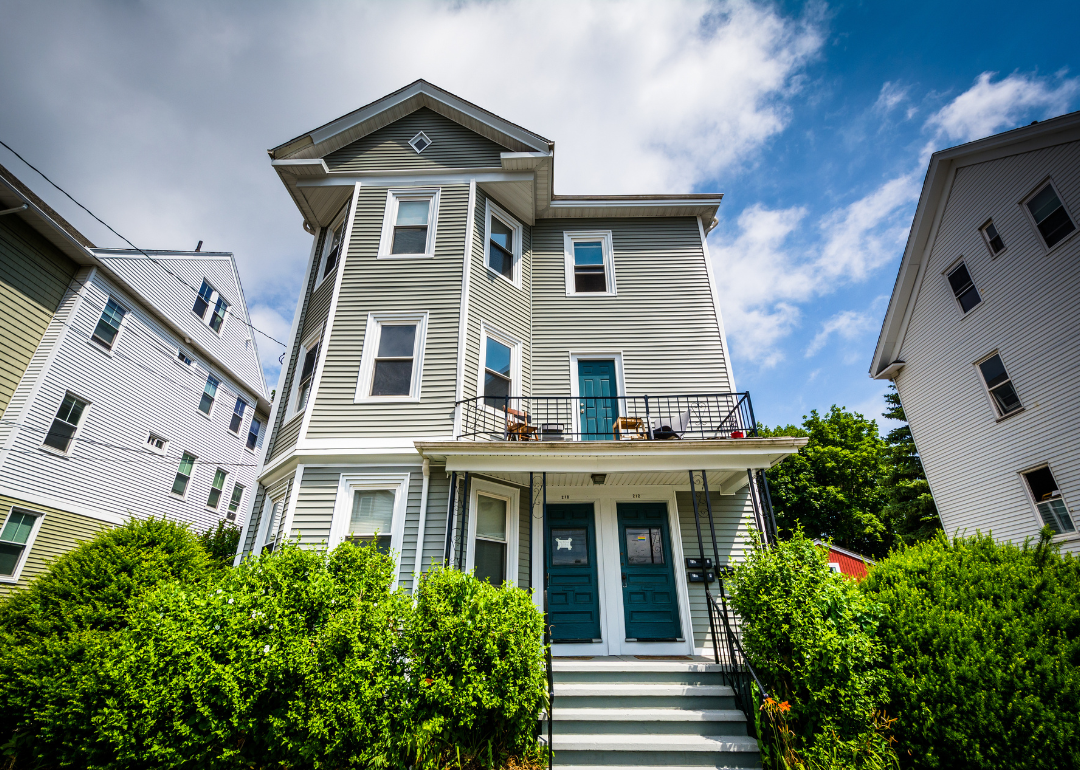
Jon Bilous // Shutterstock
Rhode Island
– Protections against LGBTQ+ discrimination: Yes
Rhode Island prohibits housing discrimination against LGBTQ+ people. State law was amended in 1995 to prohibit discrimination on the basis of sexual orientation and in 2001 to prohibit discrimination based on gender identity. Democrats control both chambers of the state legislature and the governorship in Rhode Island.

Canva
South Carolina
– Protections against LGBTQ+ discrimination: No
South Carolina does not provide state-level housing discrimination protection on the basis of sexual orientation and gender identity. LGBTQ+ residents are still covered by the federal Fair Housing Act. Republicans control both chambers of the state legislature and the governorship in South Carolina.
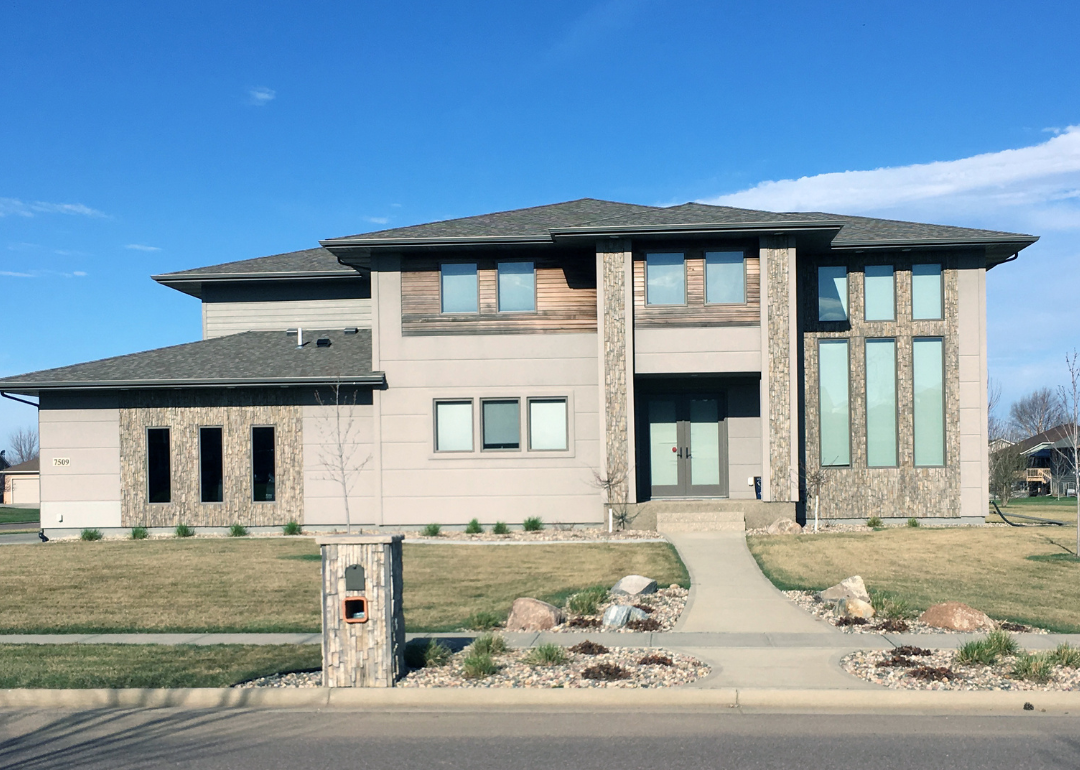
RyanWilson10 // Shutterstock
South Dakota
– Protections against LGBTQ+ discrimination: No
South Dakota does not provide state-level housing discrimination protection on the basis of sexual orientation and gender identity. The federal Fair Housing Act still covers LGBTQ+ residents. Republicans control both chambers of the state legislature and the governorship in South Dakota.
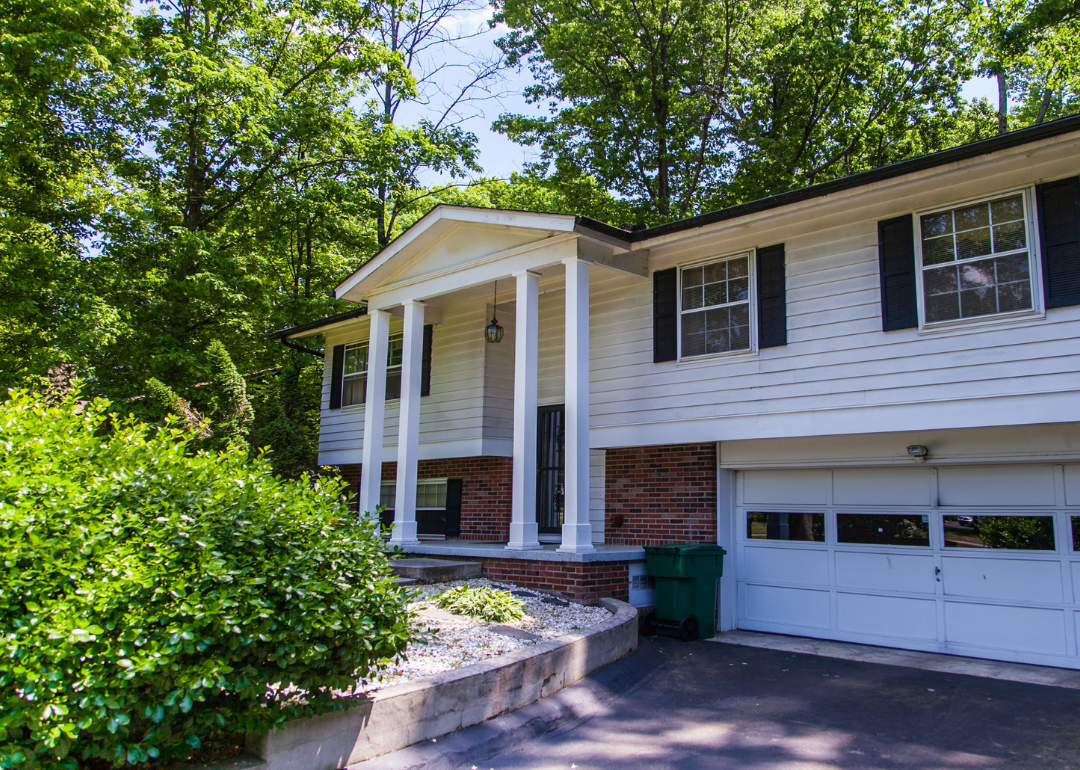
eakkarat rangram // Shutterstock
Tennessee
– Protections against LGBTQ+ discrimination: No
Tennessee does not provide state-level housing discrimination protection on the basis of sexual orientation and gender identity. A state law passed in 2011 also prevents local municipalities from passing or enforcing their own nondiscrimination laws. LGBTQ+ residents are still covered by the federal Fair Housing Act. Republicans control both chambers of the state legislature and the governorship in Tennessee.
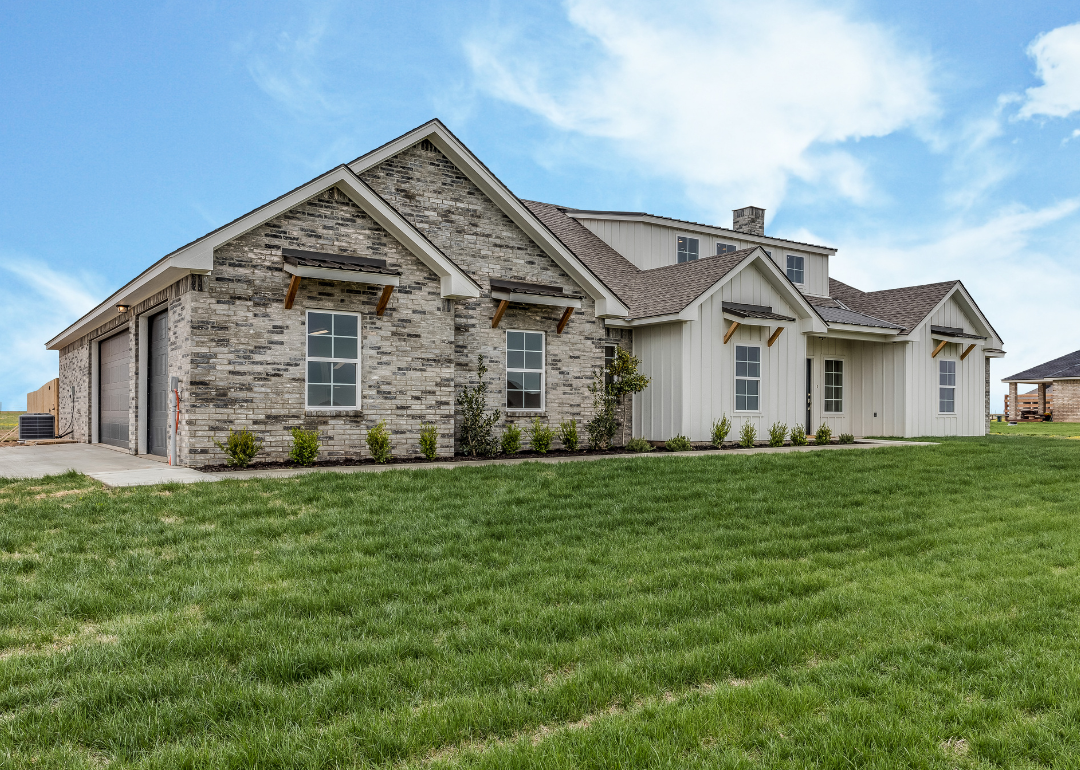
Canva
Texas
– Protections against LGBTQ+ discrimination: No
Texas does not provide state-level housing discrimination protection on the basis of sexual orientation and gender identity. LGBTQ+ residents are still covered by the federal Fair Housing Act. Republicans control both chambers of the state legislature and the governorship in Texas.

Jason Finn // Shutterstock
Utah
– Protections against LGBTQ+ discrimination: Yes
Utah law bars housing discrimination against LGBTQ+ people. A 2015 amendment added sexual orientation and gender identity as protected classes in the state’s Antidiscrimination Act and Fair Housing Act. Republicans control both chambers of the state legislature and the governorship in Utah.
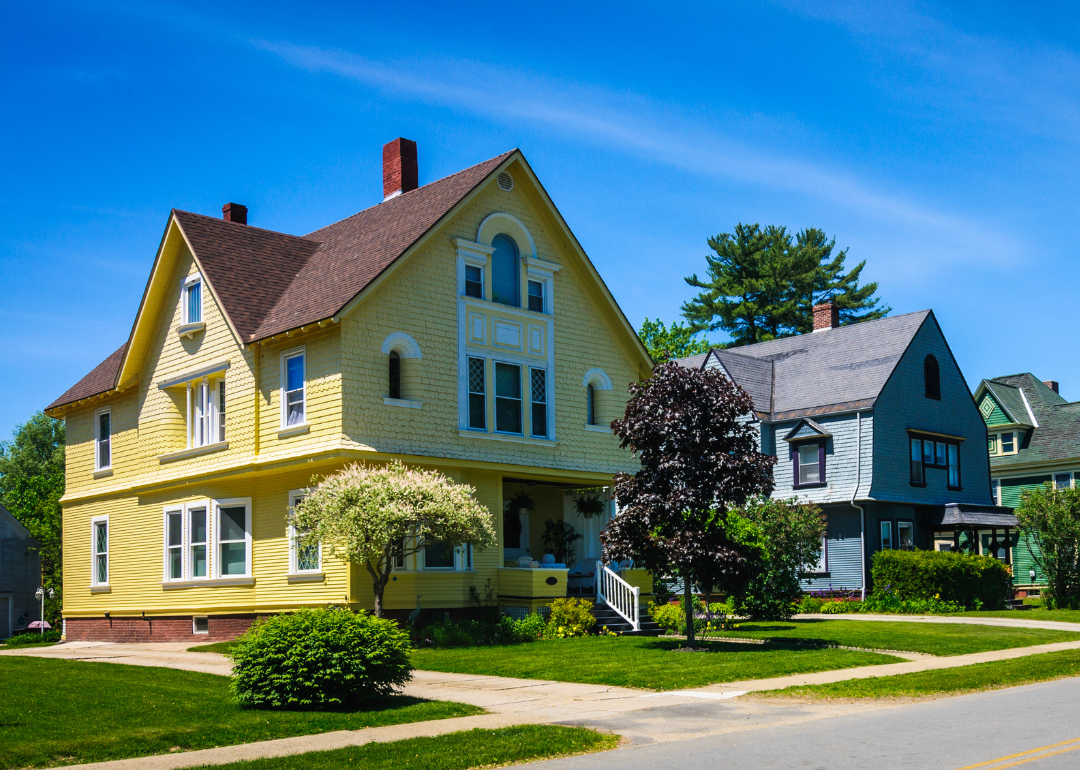
Canva
Vermont
– Protections against LGBTQ+ discrimination: Yes
Vermont prohibits housing discrimination against LGBTQ+ people. State law was amended in 1992 to include sexual orientation and in 2007 to include gender identity. Democrats control both chambers of the state legislature in Vermont; the governor is a Republican.
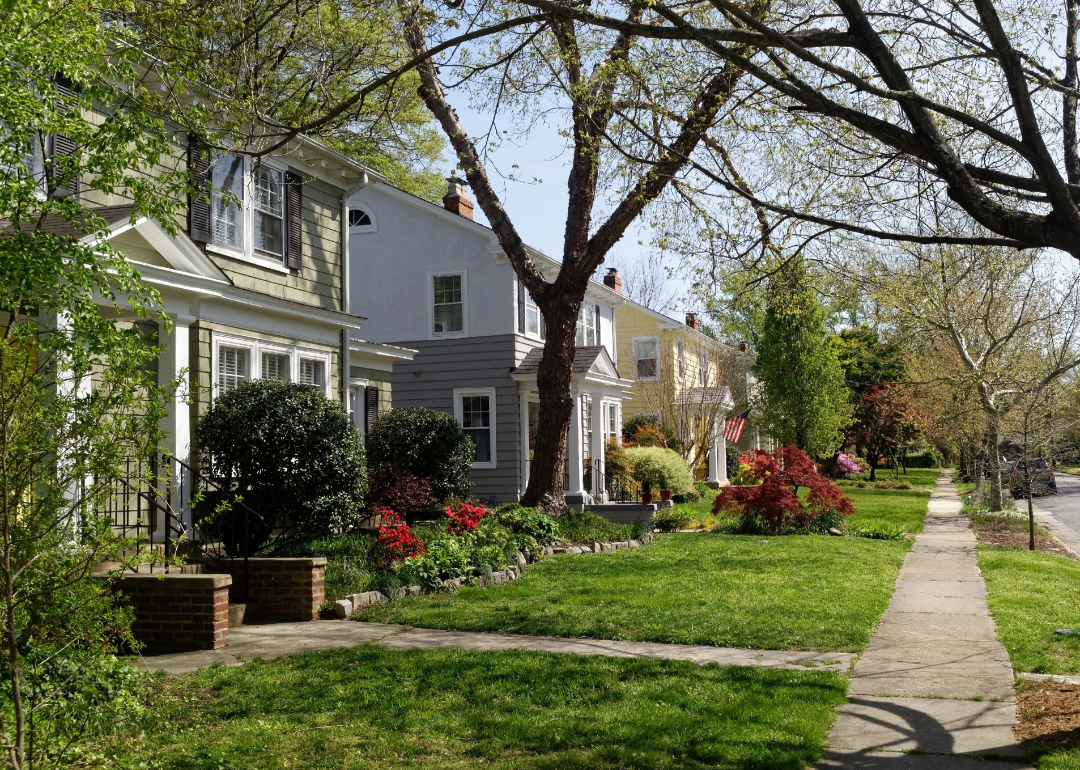
Noel V. Baebler // Shutterstock
Virginia
– Protections against LGBTQ+ discrimination: Yes
Virginia law provides protection from housing discrimination for LGBTQ+ people. A 2020 amendment to the Virginia Human Rights Act prohibits discrimination based on sexual orientation and gender identity in employment, public accommodations, credit, and housing. Control of the state legislature in Virginia is divided between Democrats and Republicans; the governor is a Republican.

Canva
Washington
– Protections against LGBTQ+ discrimination: Yes
The state of Washington prohibits housing discrimination against LGBTQ+ people. In 2006, state law on unfair real estate transactions was amended to specify that discrimination based on sexual orientation and sex is illegal. Democrats control both chambers of the state legislature and the governorship in Washington.
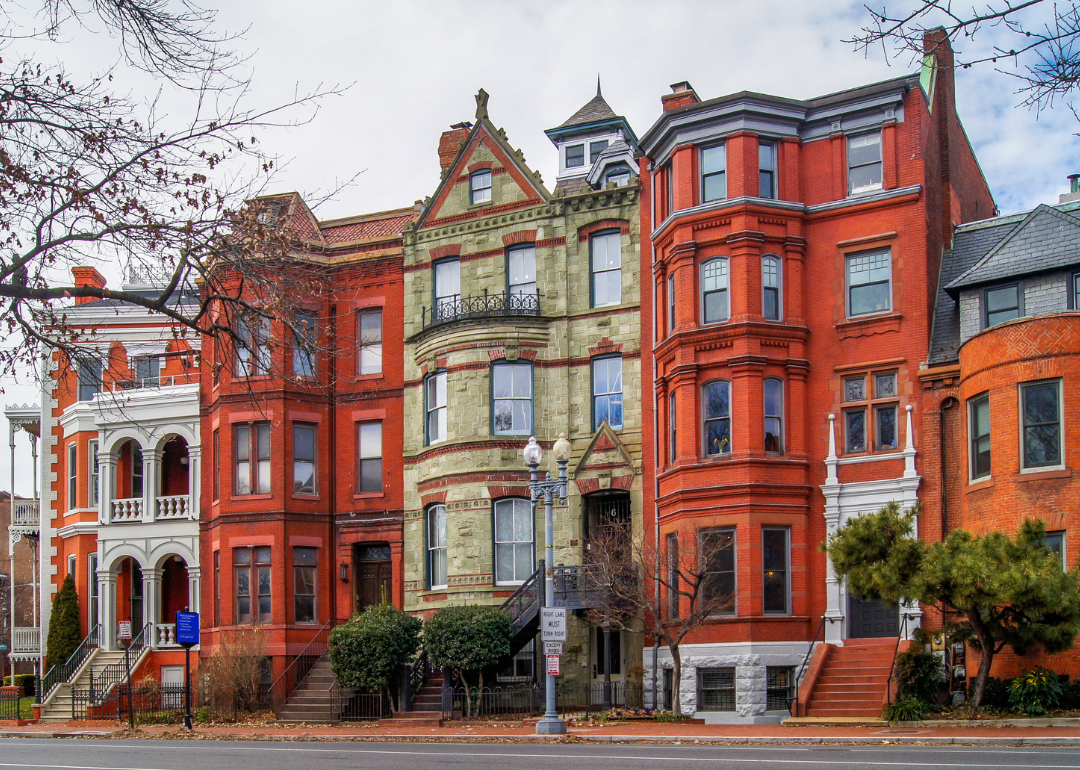
Suzanne Simon // Shutterstock
Washington DC
– Protections against LGBTQ+ discrimination: Yes
The District of Columbia provides protection from housing discrimination for LGBTQ+ people. A law prohibiting discrimination on the basis of sexual orientation was originally passed in 1973 and was re-adopted as the D.C. Human Rights Act in 1977. The act was also amended in 2006 to prohibit discrimination based on gender identity.
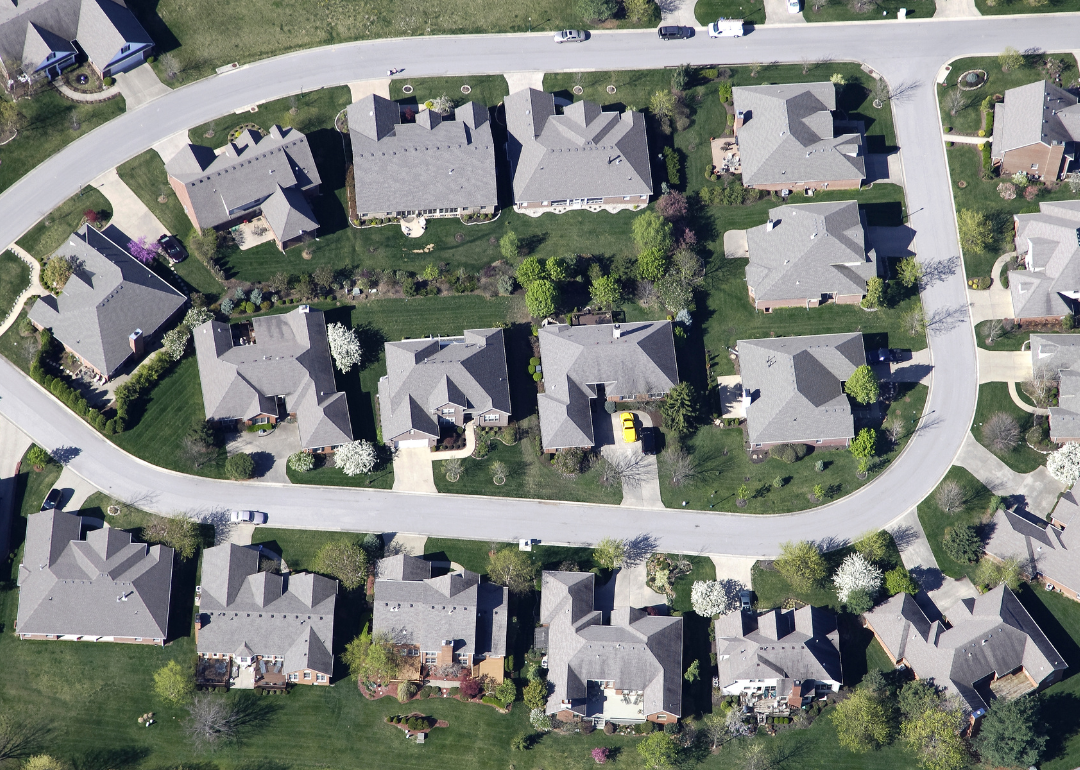
Canva
West Virginia
– Protections against LGBTQ+ discrimination: No
West Virginia does not provide state-level housing discrimination protection on the basis of sexual orientation and gender identity. LGBTQ+ residents are still covered by the federal Fair Housing Act. Republicans control both state legislature chambers and the governorship in West Virginia.
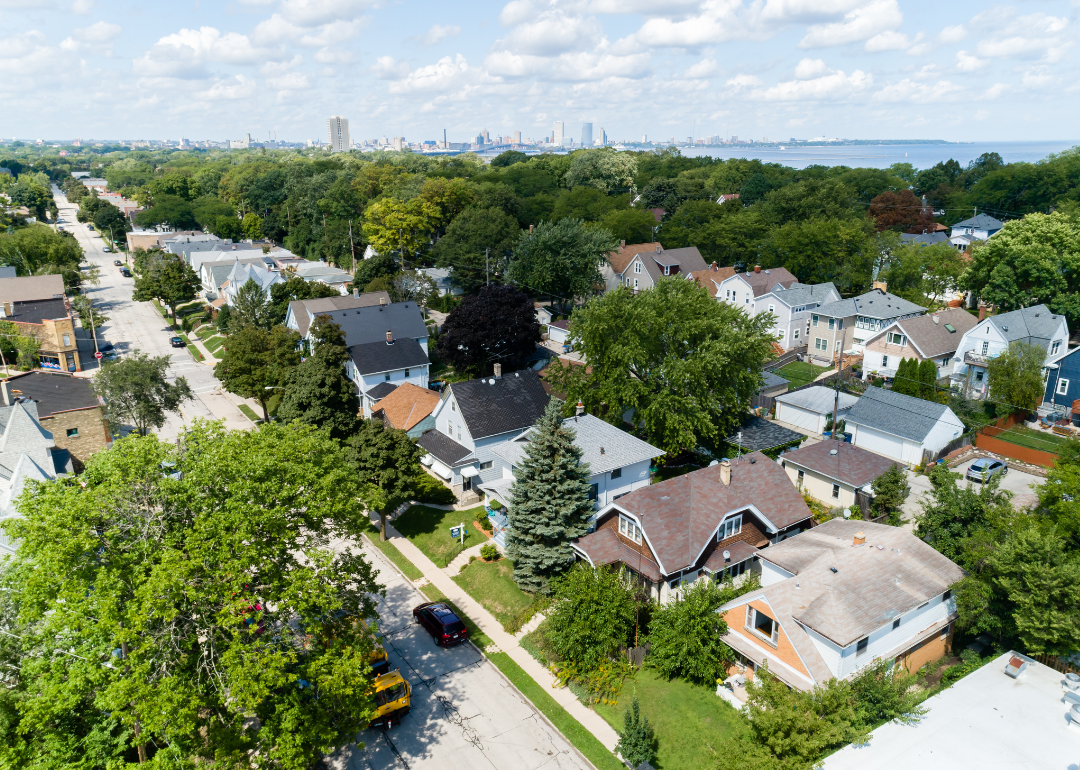
James Meyer // Shutterstock
Wisconsin
– Protections against LGBTQ+ discrimination: Sexual orientation only
Wisconsin explicitly prohibits housing discrimination on the basis of sexual orientation without mentioning gender identity, although discrimination based on sex is prohibited. Wisconsin adopted the law in 1982. Republicans control both chambers of the state legislature in Wisconsin; the governor is a Democrat.
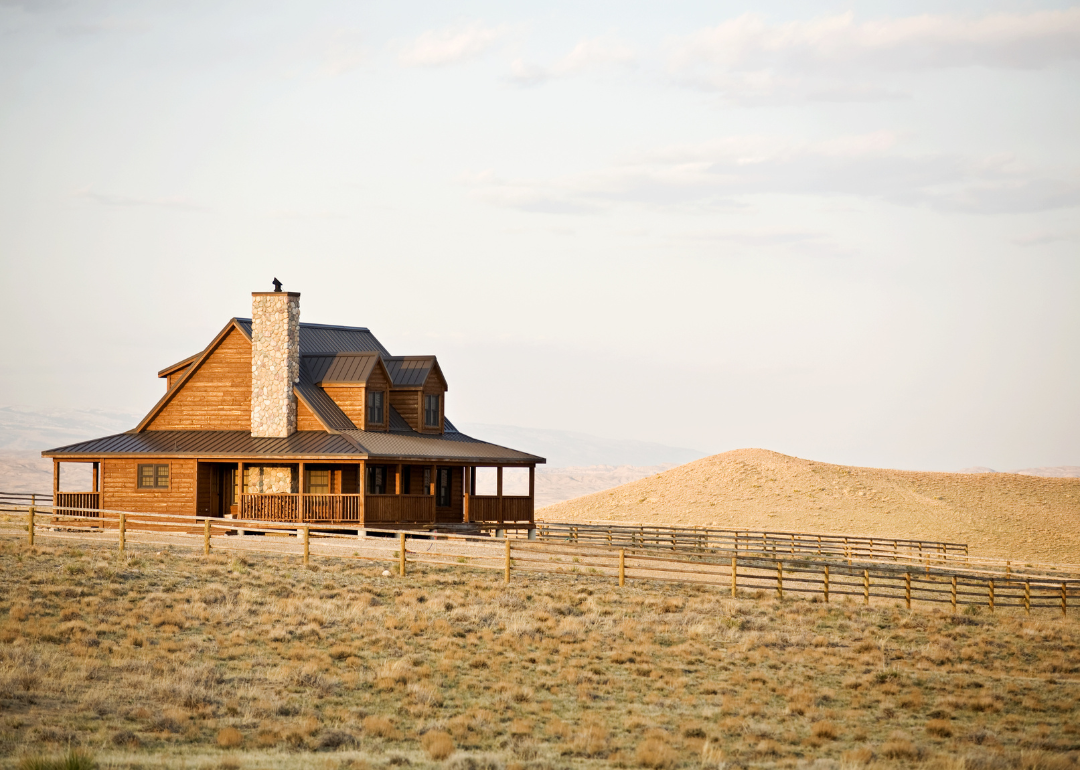
Sascha Burkard // Shutterstock
Wyoming
– Protections against LGBTQ+ discrimination: No
Wyoming does not provide state-level housing discrimination protection on the basis of sexual orientation and gender identity. The federal Fair Housing Act still covers LGBTQ+ residents. Republicans control both chambers of the state legislature and the governorship in Wyoming.
This story originally appeared on Foothold Technology and was produced and
distributed in partnership with Stacker Studio.
Founded in 2017, Stacker combines data analysis with rich editorial context, drawing on authoritative sources and subject matter experts to drive storytelling.
You may like
Business
Cashiers vs. digital ordering: What do people want, and at what cost?
Published
3 days agoon
April 26, 2024
You walk into a fast-food restaurant on your lunch break. You don’t see a cashier but instead a self-service kiosk, a technology that is becoming the new norm in eateries across the country. The kiosks usually offer customers a menu to scroll through and pictures of meals and specials with prompts to select their food and submit their payment in one place.
Self-service kiosks are big business. In fact, the market for self-service products is expected to grow from a $40.3 billion market value in 2022 to $63 billion by 2027, according to a report from BCC Research. Consumers do have mixed opinions about the kiosks, but about 3 out of 5 surveyed consumers reported that they were likely to use self-service kiosks, according to the National Restaurant Association. The technology, while expensive, can boost businesses’ bottom lines in the long run.
Task Group summarized the rise in digital ordering over the past couple of years, its acceptance among customers, and a cost analysis of adopting the technology.
Self-service kiosks—digital machines or display booths—are generally placed in high-traffic areas. They can be used for different reasons, including navigating a store or promoting a product. Interactive self-service kiosks in particular are meant for consumers to place orders with little to no assistance from employees.
The idea of kiosks isn’t new. The concept of self-service was first introduced in the 1880s when the first types of kiosks appeared as vending machines selling items like gum and postcards. In the present age of technology, the trend of self-service has only grown. Restaurants such as McDonald’s and Starbucks have already tried out cashierless technology.
From a business perspective, the kiosks offer a huge upside. While many employers are looking for workers, they’re having a hard time finding staff. In the midst of the COVID-19 pandemic, employers struggled with a severe employee shortage. Since then, the problem has continued. In 2022, the National Restaurant Association reported that 65% of restaurant operators didn’t have enough workers on staff to meet consumer demand. With labor shortages running rampant, cashierless technology could help restaurants fill in for the lack of human employees.
The initial investment for the kiosks can be high. The general cost per kiosk is difficult to quantify, with one manufacturer estimating a range of $1,500 to $20,000 per station. However, with the use of kiosks, restaurants may not need as many cashiers or front-end employees, instead reallocating workers’ time to other tasks.
In May 2022, the hourly mean wage for cashiers who worked in restaurants and other eating establishments was $12.99, according to the Bureau of Labor Statistics. Kiosks could cost less money than a cashier in the long run.
But how do the customers themselves feel about the growing trend? According to a Deloitte survey, 62% of respondents report that they were “somewhat likely” to order from a cashierless restaurant if given the chance to do so. The same survey reported that only 19% of respondents had experience with a cashierless restaurant.
What would it mean for society if restaurants did decide to go completely cashierless? Well, millions of positions would likely no longer be necessary. One report suggests 82% of restaurant positions could be replaced by robots, a prospect making automation appealing to owners who can’t find staff to hire.
Due to the ongoing labor shortage, employers have tried raising employee wages. Papa John’s, Texas Roadhouse, and Chipotle were among the restaurant companies that increased employee pay or offered bonuses in an attempt to hire and retain more workers. Meanwhile, some companies have decided to use technology to perform those jobs instead, so that they wouldn’t have to put effort into hiring or focus their existing staff on other roles.
Story editing by Ashleigh Graf and Jeff Inglis. Copy editing by Tim Bruns.
![]()
Founded in 2017, Stacker combines data analysis with rich editorial context, drawing on authoritative sources and subject matter experts to drive storytelling.
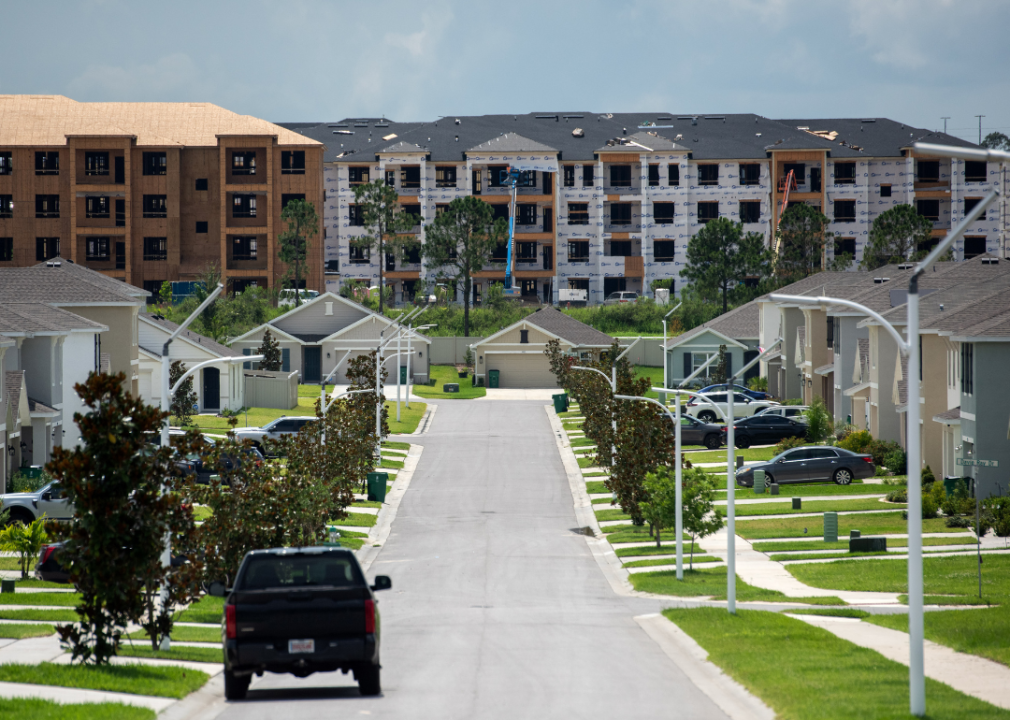
It’s well-documented that the surest, and often best, return on investments comes from playing the long game. But between stocks and real estate, which is the stronger bet?
To find out, financial planning firm Wealth Enhancement Group analyzed data from academic research, Standard and Poor’s, and Nareit to see how real estate compares to stocks as an investment.
Data going back to 1870 shows the well-established power of real estate as a powerful “long-run investment.” From 1870-2015, and after adjusting for inflation, real estate produced an average annual return of 7.05%, compared to 6.89% for equities. These findings, published in the 2019 issue of The Quarterly Journal of Economics, illustrate that stocks can deviate as much as 22% from their average, while housing only spreads out 10%. That’s because despite having comparable returns, stocks are inherently more volatile due to following the whims of the business cycle.
Real estate has inherent benefits, from unlocking cash flow and offering tax breaks to building equity and protecting investors from inflation. Investments here also help to diversify a portfolio, whether via physical properties or a real estate investment trust. Investors can track markets with standard resources that include the S&P CoreLogic Case-Shiller Home Price Indices, which tracks residential real estate prices; the Nareit U.S. Real Estate Index, which gathers data on the real estate investment trust, or REIT, industry; and the S&P 500, which tracks the stocks of 500 of the largest companies in the U.S.
High interest rates and a competitive market dampened the flurry of real-estate investments made in the last four years. The rise in interest rates equates to a bigger borrowing cost for investors, which can spell big reductions in profit margins. That, combined with the risk of high vacancies, difficult tenants, or hidden structural problems, can make real estate investing a less attractive option—especially for first-time investors.
Keep reading to learn more about whether real estate is a good investment today and how it stacks up against the stock market.
![]()

Wealth Enhancement Group
Stocks and housing have both done well
REITs can offer investors the stability of real estate returns without bidding wars or hefty down payments. A hybrid model of stocks and real estate, REITs allow the average person to invest in businesses that finance or own income-generating properties.
REITs delivered slightly better returns than the S&P 500 over the past 20-, 25-, and 50-year blocks. However, in the short term—the last 10 years, for instance—stocks outperformed REITs with a 12% return versus 9.5%, according to data compiled by The Motley Fool investor publication.
Whether a new normal is emerging that stocks will continue to offer higher REITs remains to be seen.
This year, the S&P 500 reached an all-time high, courtesy of investor enthusiasm in speculative tech such as artificial intelligence. However, just seven tech companies, dubbed “The Magnificent 7,” are responsible for an outsized amount of the S&P’s returns last year, creating worry that there may be a tech bubble.
While indexes keep a pulse on investment performance, they don’t always tell the whole story. The Case-Shiller Index only measures housing prices, for example, which leaves out rental income (profit) or maintenance costs (loss) when calculating the return on residential real estate investment.

Wealth Enhancement Group
Housing returns have been strong globally too
Like its American peers, the global real estate market in industrialized nations offers comparable returns to the international stock market.
Over the long term, returns on stocks in industrialized nations is 7%, including dividends, and 7.2% in global real estate, including rental income some investors receive from properties. Investing internationally may have more risk for American buyers, who are less likely to know local rules and regulations in foreign countries; however, global markets may offer opportunities for a higher return. For instance, Portugal’s real estate market is booming due to international visitors deciding to move there for a better quality of life. Portugal’s housing offers a 6.3% return in the long term, versus only 4.3% for its stock market.
For those with deep enough pockets to stay in, investing in housing will almost always bear out as long as the buyer has enough equity to manage unforeseen expenses and wait out vacancies or slumps in the market. Real estate promises to appreciate over the long term, offers an opportunity to collect rent for income, and allows investors to leverage borrowed capital to increase additional returns on investment.
Above all, though, the diversification of assets is the surest way to guarantee a strong return on investments. Spreading investments across different assets increases potential returns and mitigates risk.
Story editing by Nicole Caldwell. Copy editing by Paris Close. Photo selection by Lacy Kerrick.
This story originally appeared on Wealth Enhancement Group and was produced and
distributed in partnership with Stacker Studio.
Founded in 2017, Stacker combines data analysis with rich editorial context, drawing on authoritative sources and subject matter experts to drive storytelling.
Business
5 tech advancements sports venues have added since your last event
Published
1 week agoon
April 19, 2024
In today’s digital climate, consuming sports has never been easier. Thanks to a plethora of streaming sites, alternative broadcasts, and advancements to home entertainment systems, the average fan has myriad options to watch and learn about their favorite teams at the touch of a button—all without ever having to leave the couch.
As a result, more and more sports venues have committed to improving and modernizing their facilities and fan experiences to compete with at-home audiences. Consider using mobile ticketing and parking passes, self-service kiosks for entry and ordering food, enhanced video boards, and jumbotrons that supply data analytics and high-definition replays. These innovations and upgrades are meant to draw more revenue and attract various sponsored partners. They also deliver unique and convenient in-person experiences that rival and outmatch traditional ways of enjoying games.
In Los Angeles, the Rams and Chargers’ SoFi Stadium has become the gold standard for football venues. It’s an architectural wonder with closer views, enhanced hospitality, and a translucent roof that cools the stadium’s internal temperature.
The Texas Rangers’ ballpark, Globe Life Field, added field-level suites and lounges that resemble the look and feel of a sports bar. Meanwhile, the Los Angeles Clippers are building a new arena (in addition to retail space, team offices, and an outdoor public plaza) that will seat 18,000 people and feature a fan section called The Wall, which will regulate attire and rooting interest.
It’s no longer acceptable to operate with old-school facilities and technology. Just look at Commanders Field (formerly FedExField), home of the Washington Commanders, which has faced criticism for its faulty barriers, leaking ceilings, poor food options, and long lines. Understandably, the team has been attempting to find a new location to build a state-of-the-art stadium and keep up with the demand for high-end amenities.
As more organizations audit their stadiums and arenas and keep up with technological innovations, Uniqode compiled a list of the latest tech advancements to coax—and keep—fans inside venues.
![]()
Jeff Gritchen/MediaNews Group/Orange County Register // Getty Images
Just Walk Out technology
After successfully installing its first cashierless grocery store in 2020, Amazon has continued to put its tracking technology into practice.
In 2023, the Seahawks incorporated Just Walk Out technology at various merchandise stores throughout Lumen Field, allowing fans to purchase items with a swipe and scan of their palms.
The radio-frequency identification system, which involves overhead cameras and computer vision, is a substitute for cashiers and eliminates long lines.
RFID is now found in a handful of stadiums and arenas nationwide. These stores have already curbed checkout wait times, eliminated theft, and freed up workers to assist shoppers, according to Jon Jenkins, vice president of Just Walk Out tech.
Billie Weiss/Boston Red Sox // Getty Images
Self-serve kiosks
In the same vein as Amazon’s self-scanning technology, self-serve kiosks have become a more integrated part of professional stadiums and arenas over the last few years. Some of these function as top-tier vending machines with canned beers and nonalcoholic drinks, shuffling lines quicker with virtual bartenders capable of spinning cocktails and mixed drinks.
The kiosks extend past beverages, as many college and professional venues have started using them to scan printed and digital tickets for more efficient entrance. It’s an effort to cut down lines and limit the more tedious aspects of in-person attendance, and it’s led various competing kiosk brands to provide their specific conveniences.
Kyle Rivas // Getty Images
Mobile ordering
Is there anything worse than navigating the concourse for food and alcohol and subsequently missing a go-ahead home run, clutch double play, or diving catch?
Within the last few years, more stadiums have eliminated those worries thanks to contactless mobile ordering. Fans can select food and drink items online on their phones to be delivered right to their seats. Nearly half of consumers said mobile app ordering would influence them to make more restaurant purchases, according to a 2020 study at PYMNTS. Another study showed a 22% increase in order size.
Many venues, including Yankee Stadium, have taken notice and now offer personalized deliveries in certain sections and established mobile order pick-up zones throughout the ballpark.
Darrian Traynor // Getty Images
QR codes at seats
Need to remember a player’s name? Want to look up an opponent’s statistics at halftime? The team at Digital Seat Media has you covered.
Thus far, the company has added seat tags to more than 50 venues—including two NFL stadiums—with QR codes to promote more engagement with the product on the field. After scanning the code, fans can access augmented reality features, look up rosters and scores, participate in sponsorship integrations, and answer fan polls on the mobile platform.
Boris Streubel/Getty Images for DFL // Getty Images
Real-time data analytics and generative AI
As more venues look to reinvigorate the in-stadium experience, some have started using generative artificial intelligence and real-time data analytics. Though not used widely yet, generative AI tools can create new content—text, imagery, or music—in conjunction with the game, providing updates, instant replays, and location-based dining suggestions
Last year, the Masters golf tournament even began including AI score projections in its mobile app. Real-time data is streamlining various stadium pitfalls, allowing operation managers to monitor staffing issues at busy food spots, adjust parking flows, and alert custodians to dirty or damaged bathrooms. The data also helps with security measures. Open up an app at a venue like the Honda Center in Anaheim, California, and report safety issues or belligerent fans to help better target disruptions and preserve an enjoyable experience.
Story editing by Nicole Caldwell. Copy editing by Paris Close. Photo selection by Lacy Kerrick.
This story originally appeared on Uniqode and was produced and
distributed in partnership with Stacker Studio.
Founded in 2017, Stacker combines data analysis with rich editorial context, drawing on authoritative sources and subject matter experts to drive storytelling.
Featured
-

 Business4 months ago
Business4 months agoSkill-based hiring is the answer to labour shortages, BCG report finds
-

 Business5 months ago
Business5 months agomesh conference goes deep on AI, with experts focusing in on training, ethics, and risk
-

 Events3 months ago
Events3 months agoThe Northern Lights Technology & Innovation Forum comes to Calgary next month
-

 People4 months ago
People4 months agoHow connected technologies trim rework and boost worker safety in hands-on industries
-

 Events6 months ago
Events6 months agoTop 5 tech and digital transformation events to wrap up 2023






